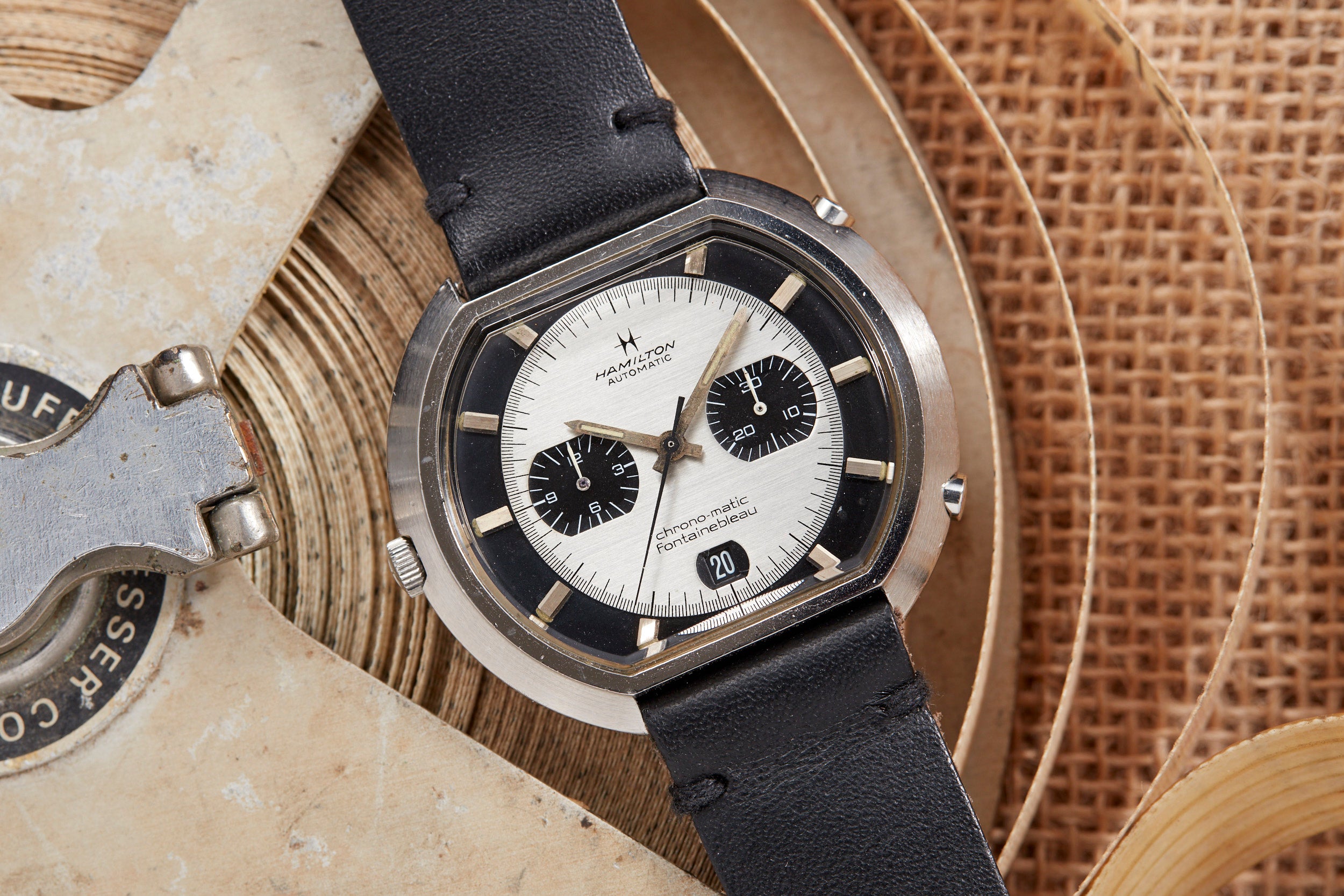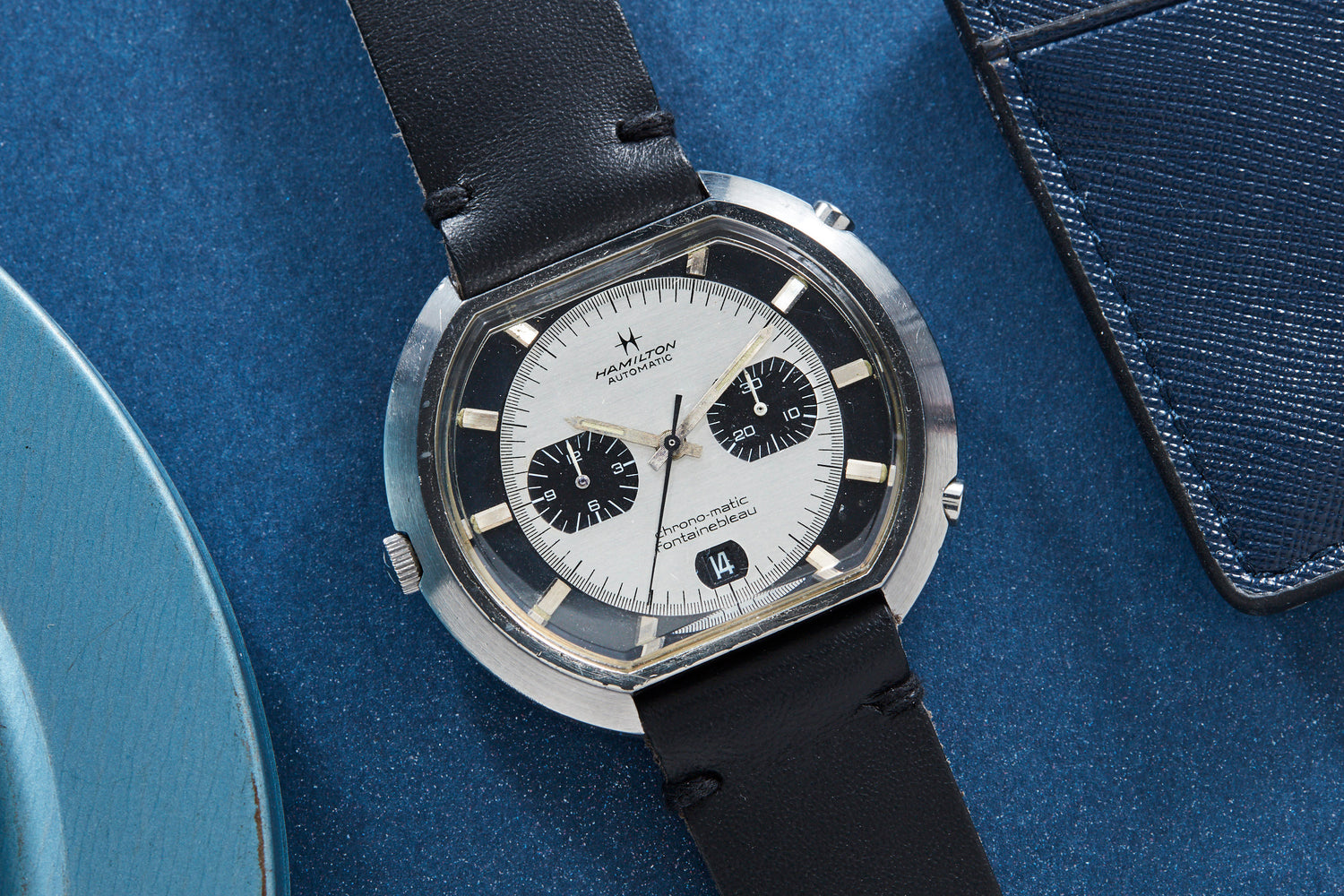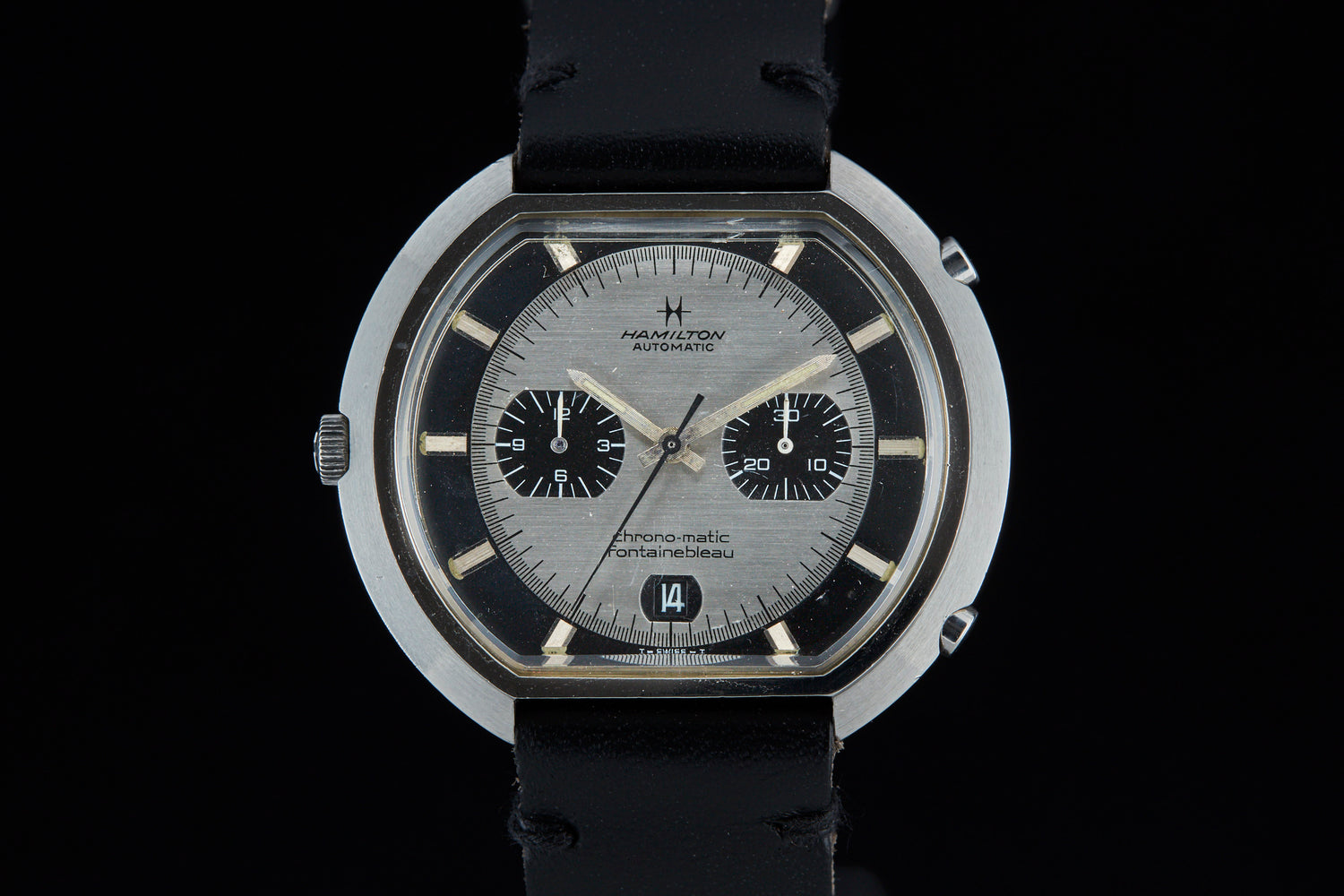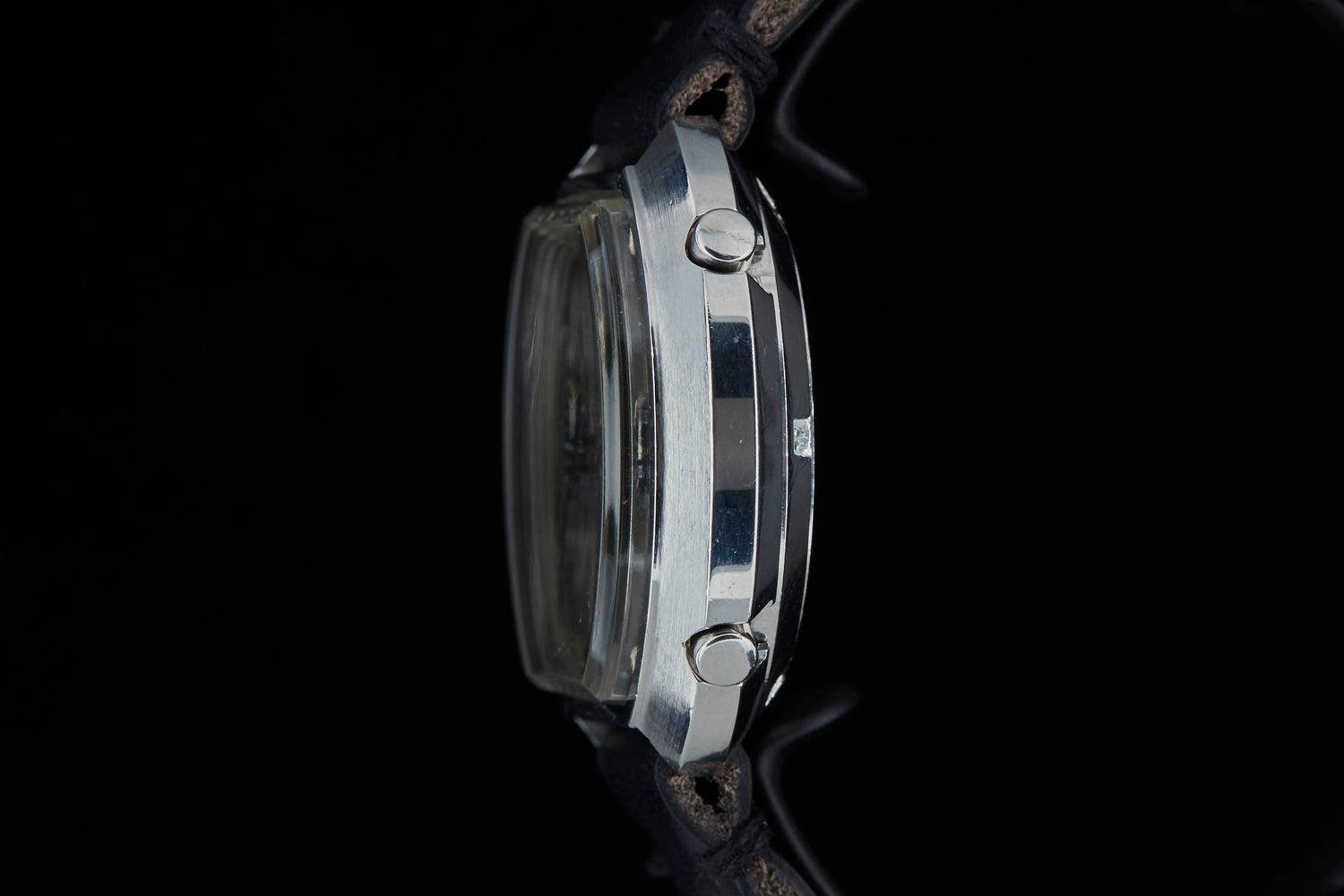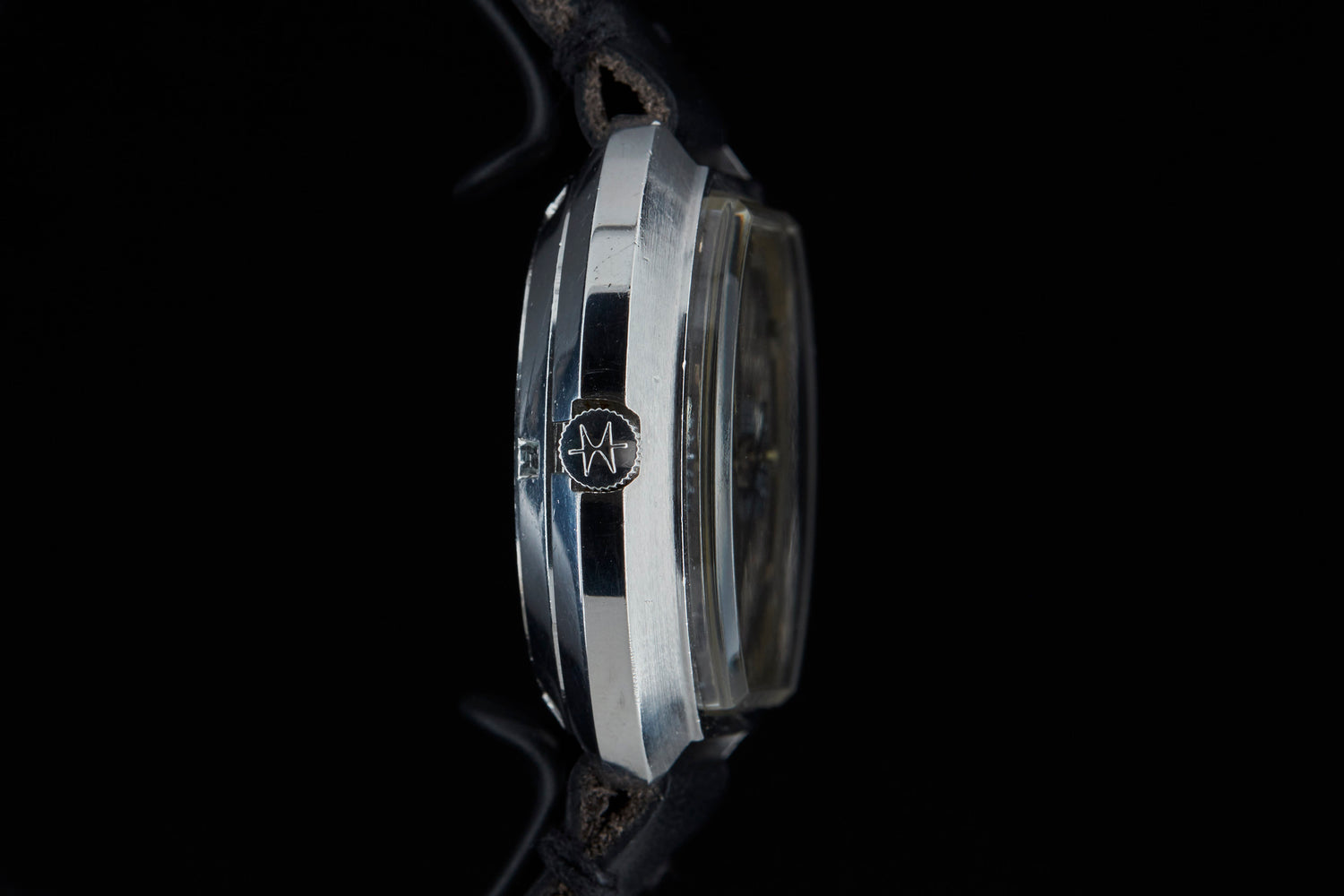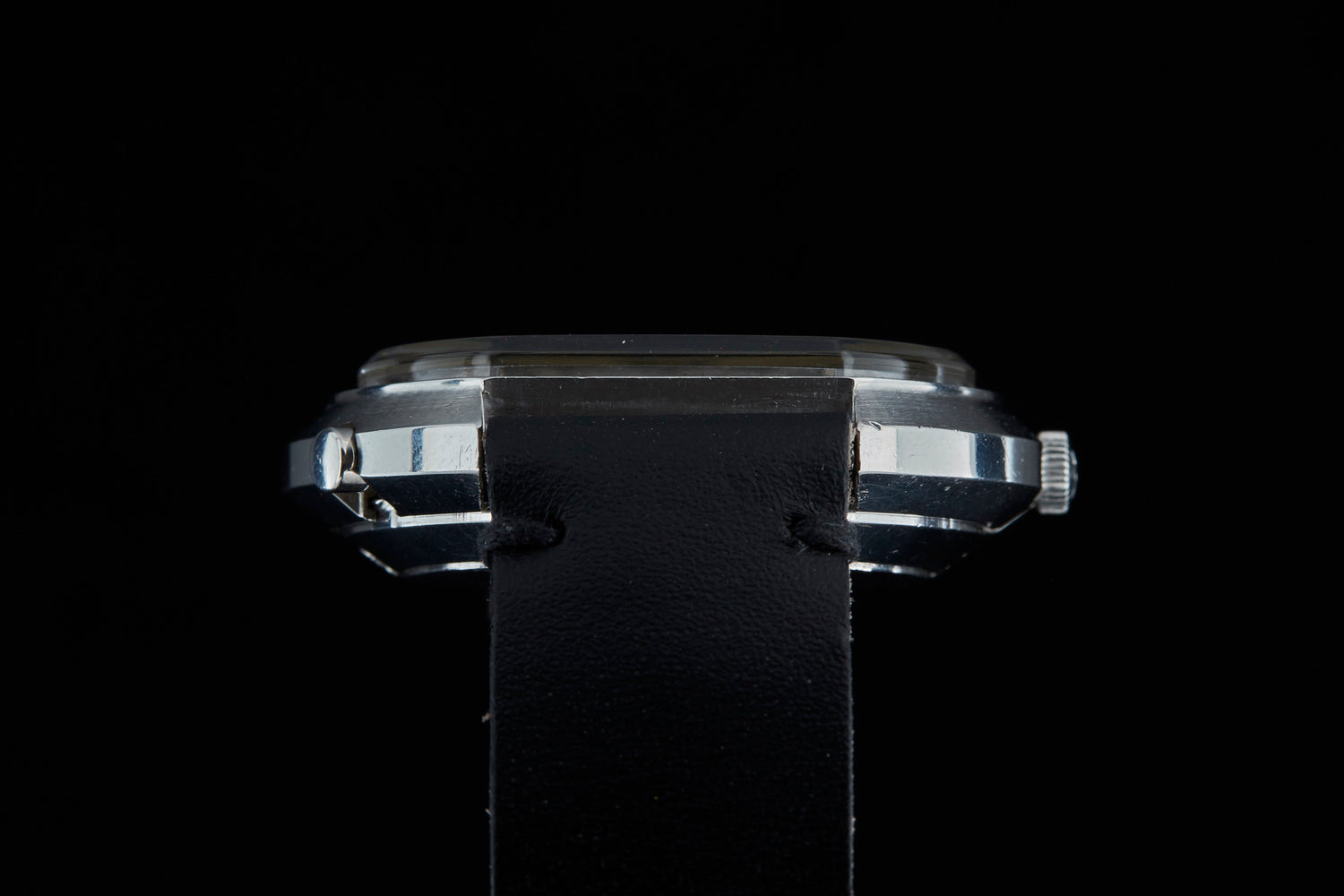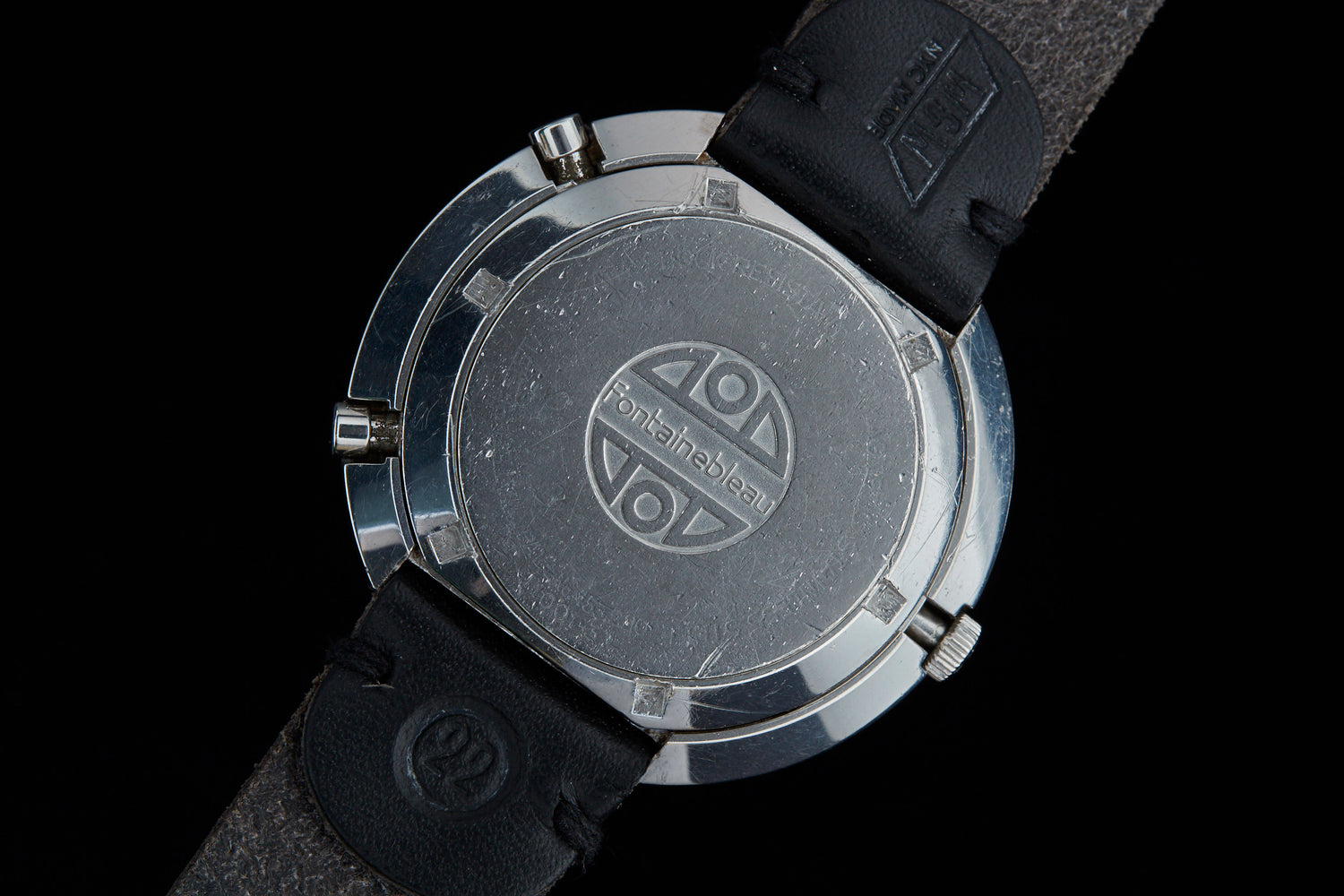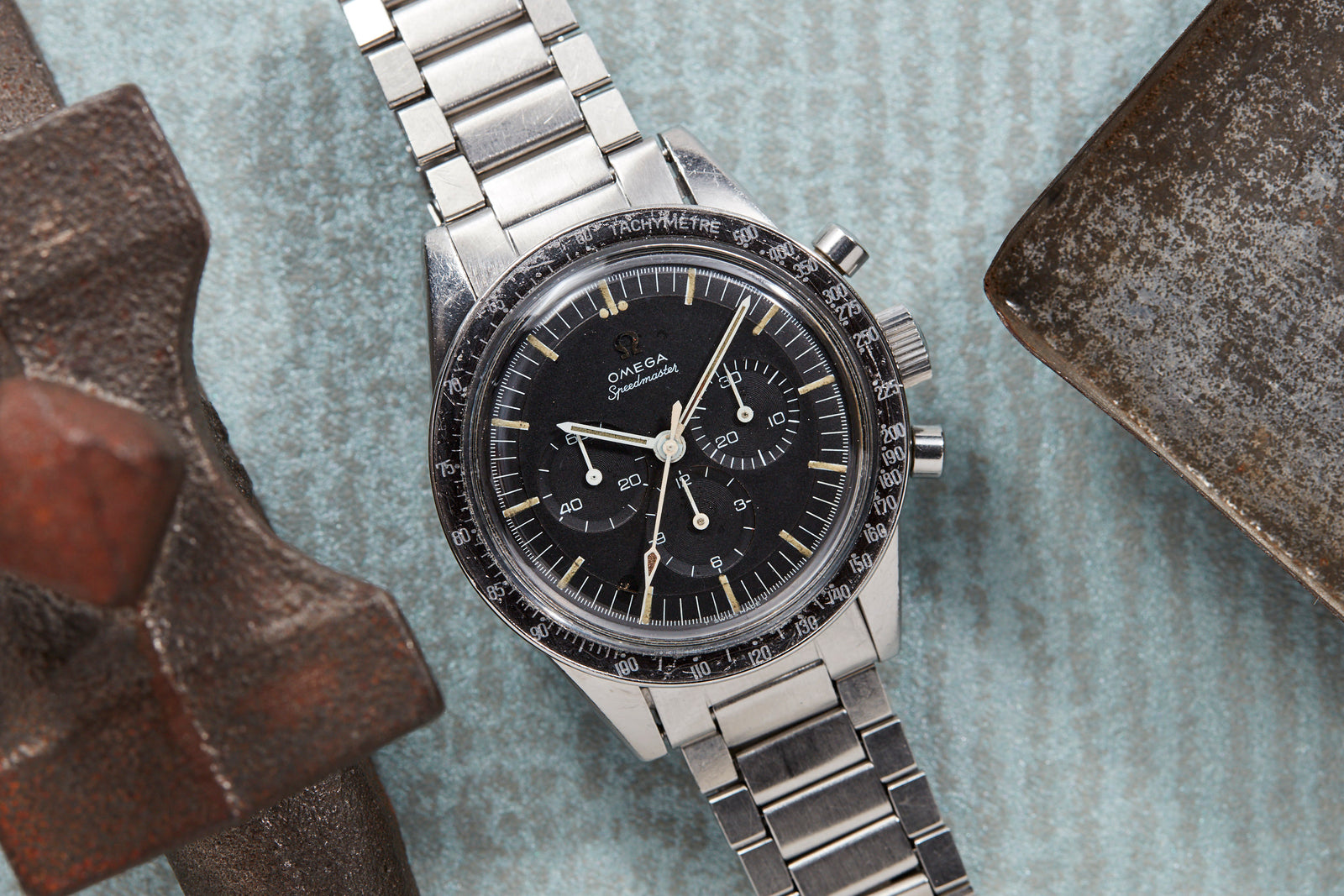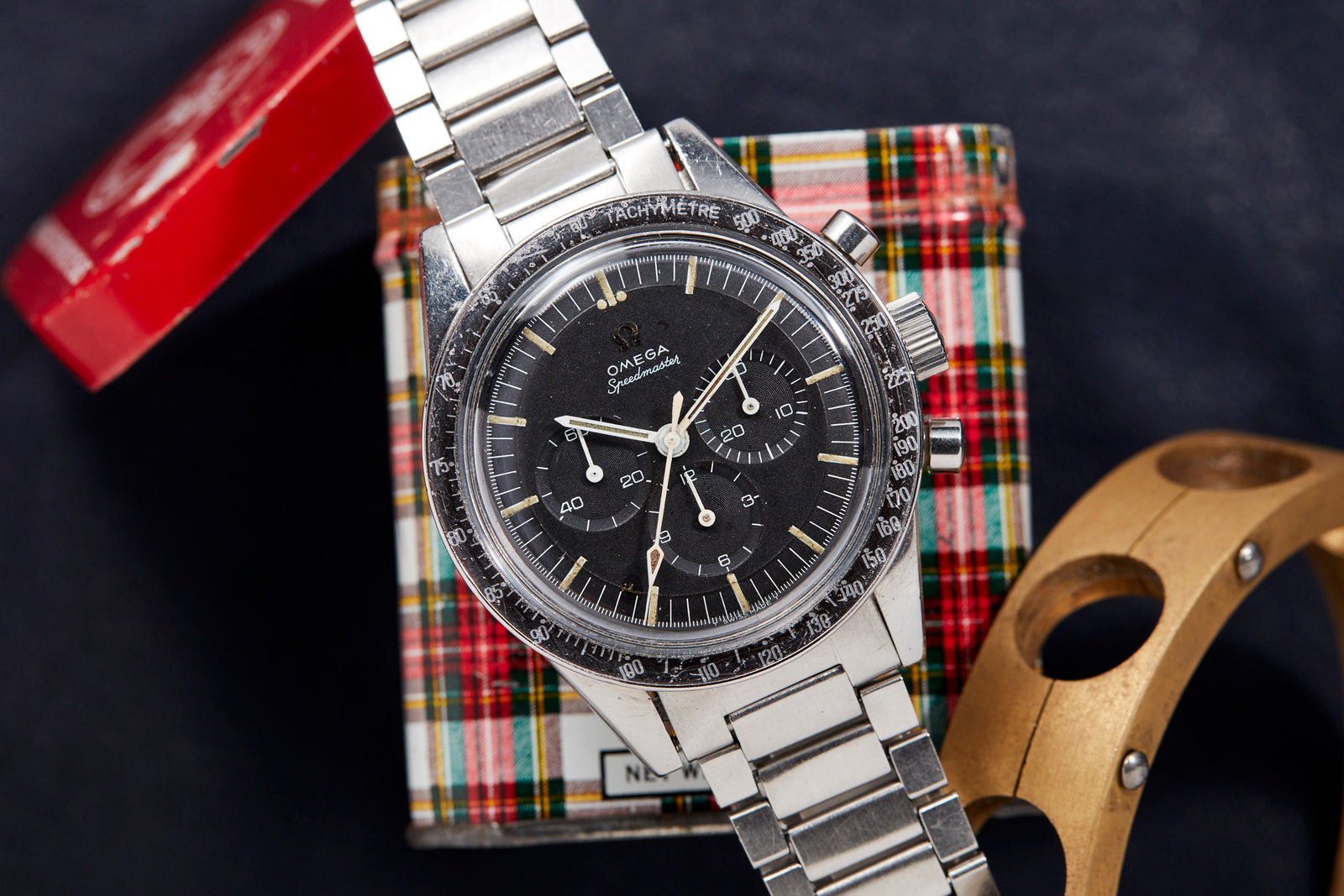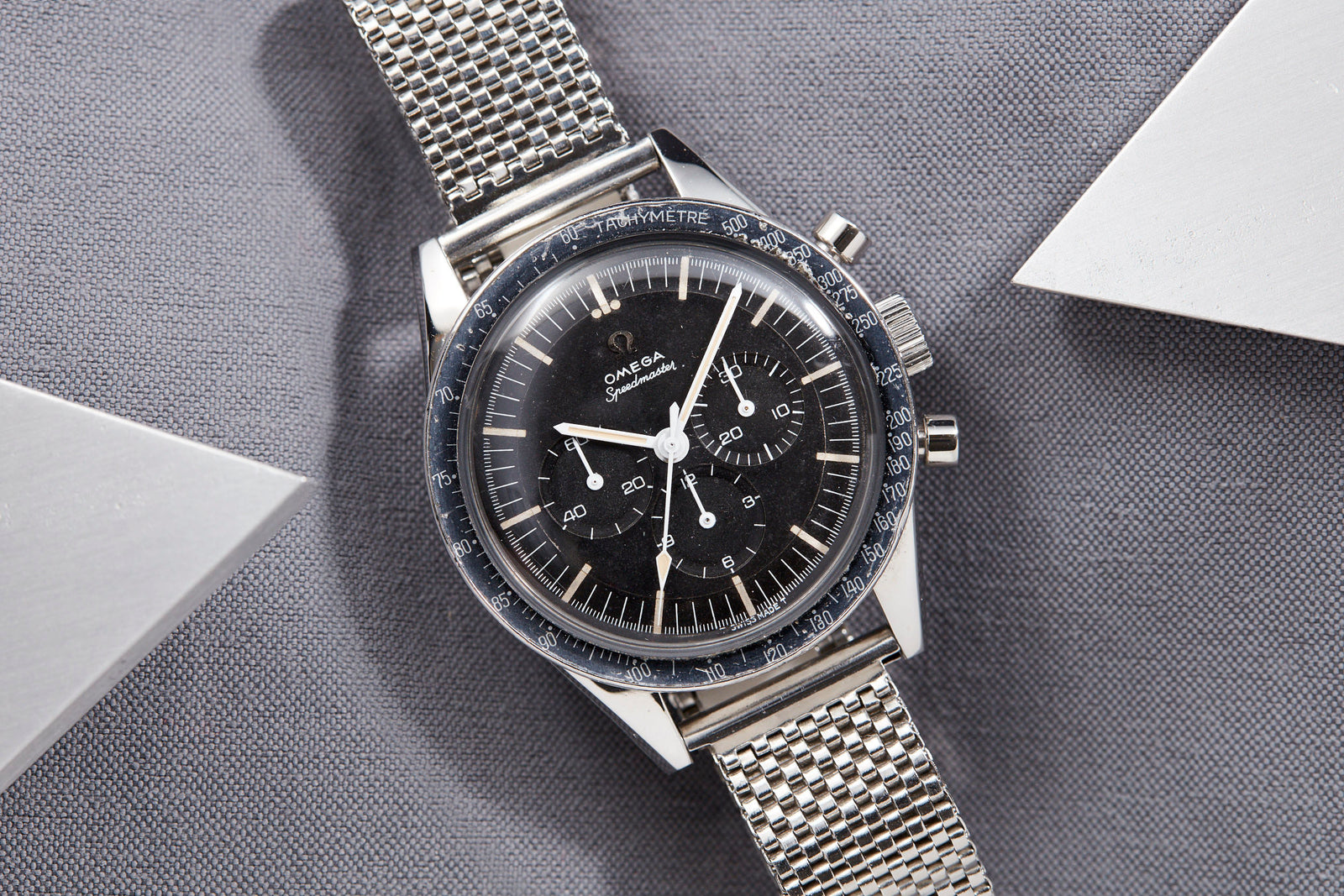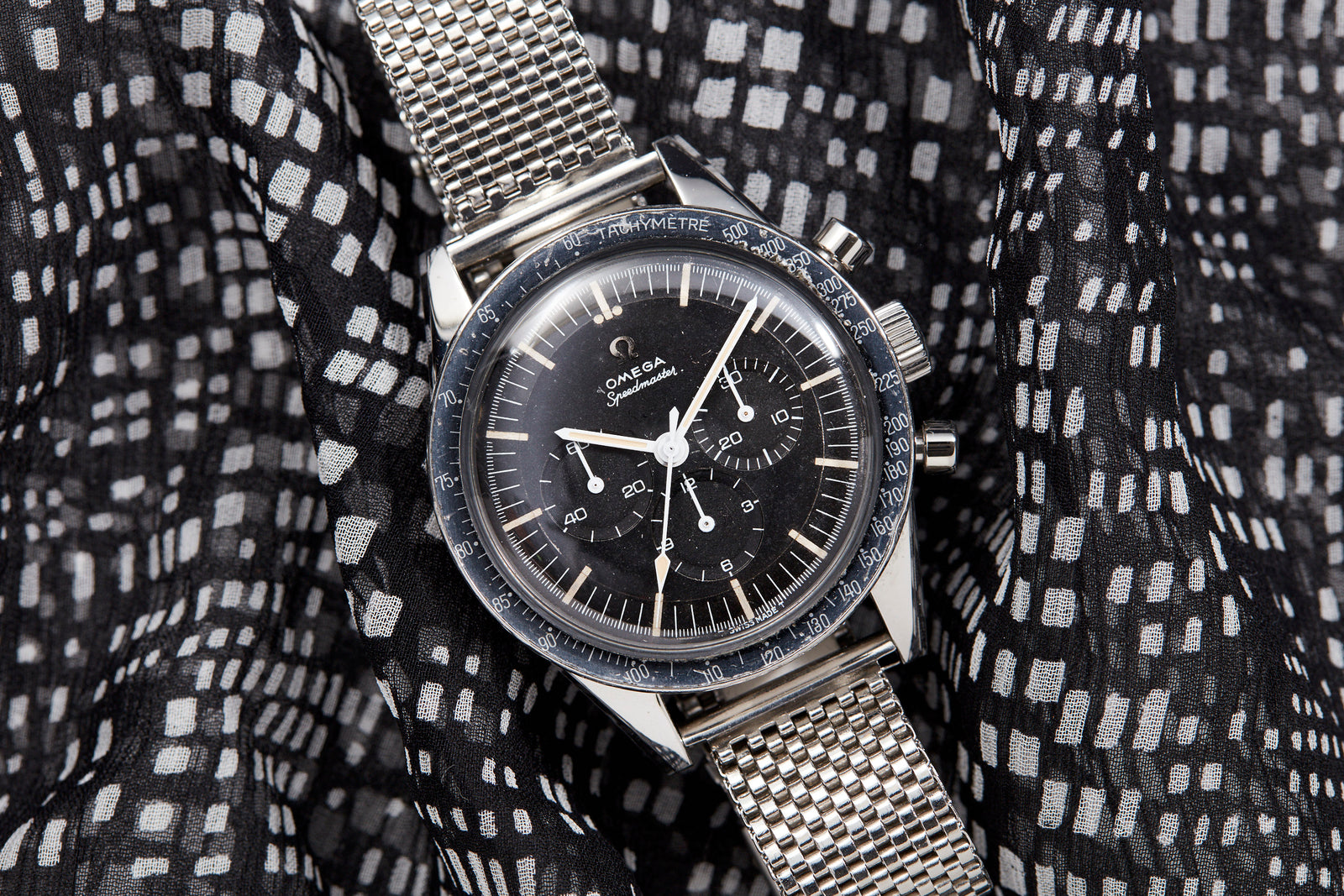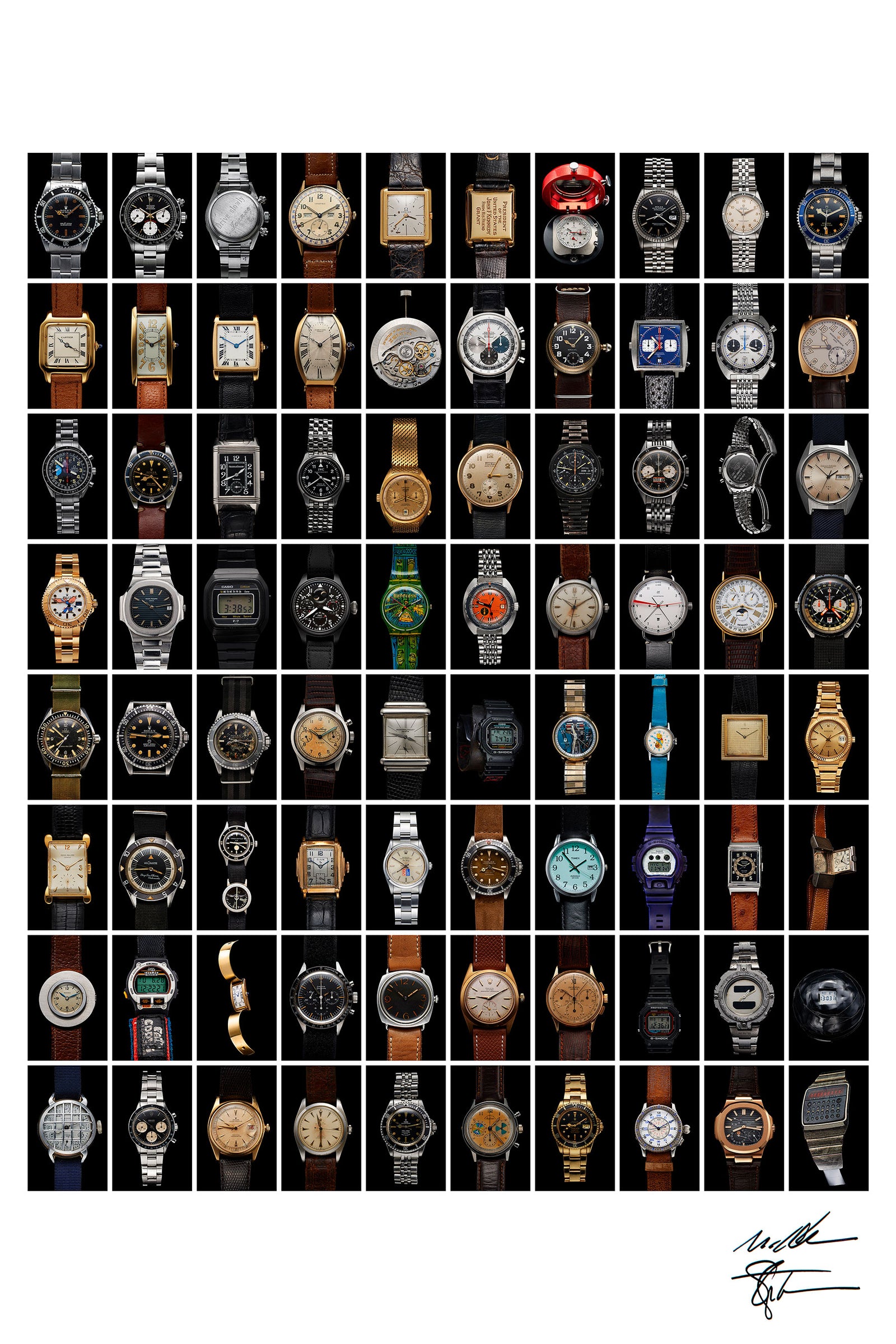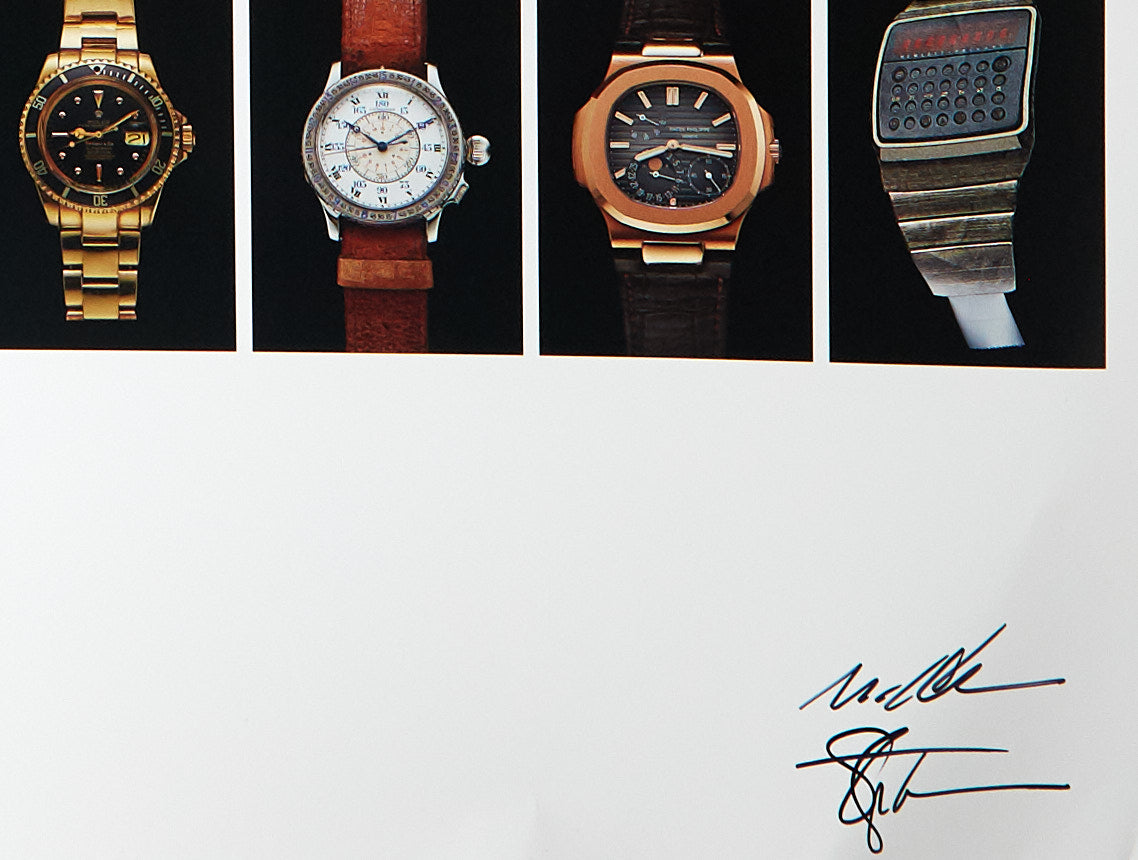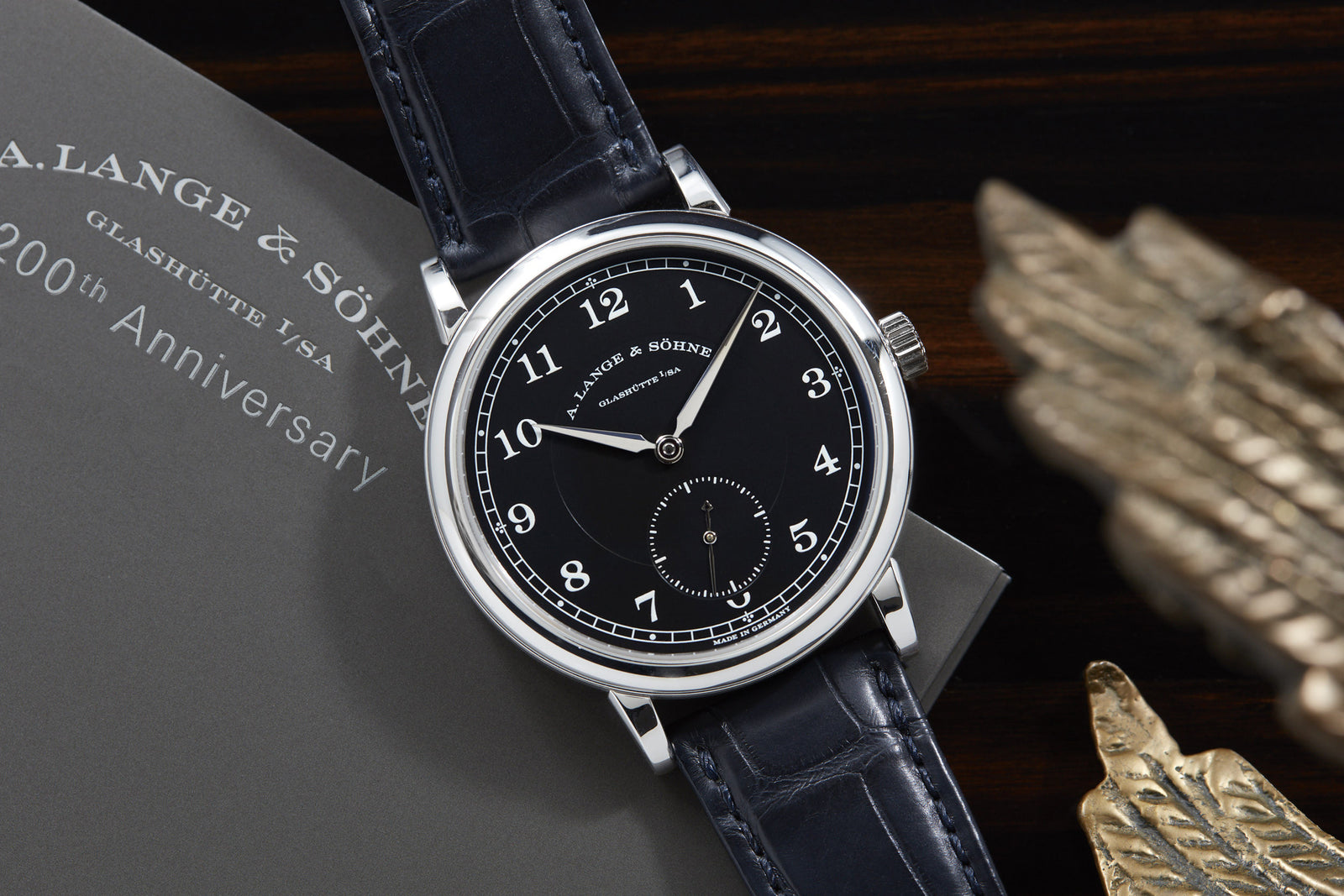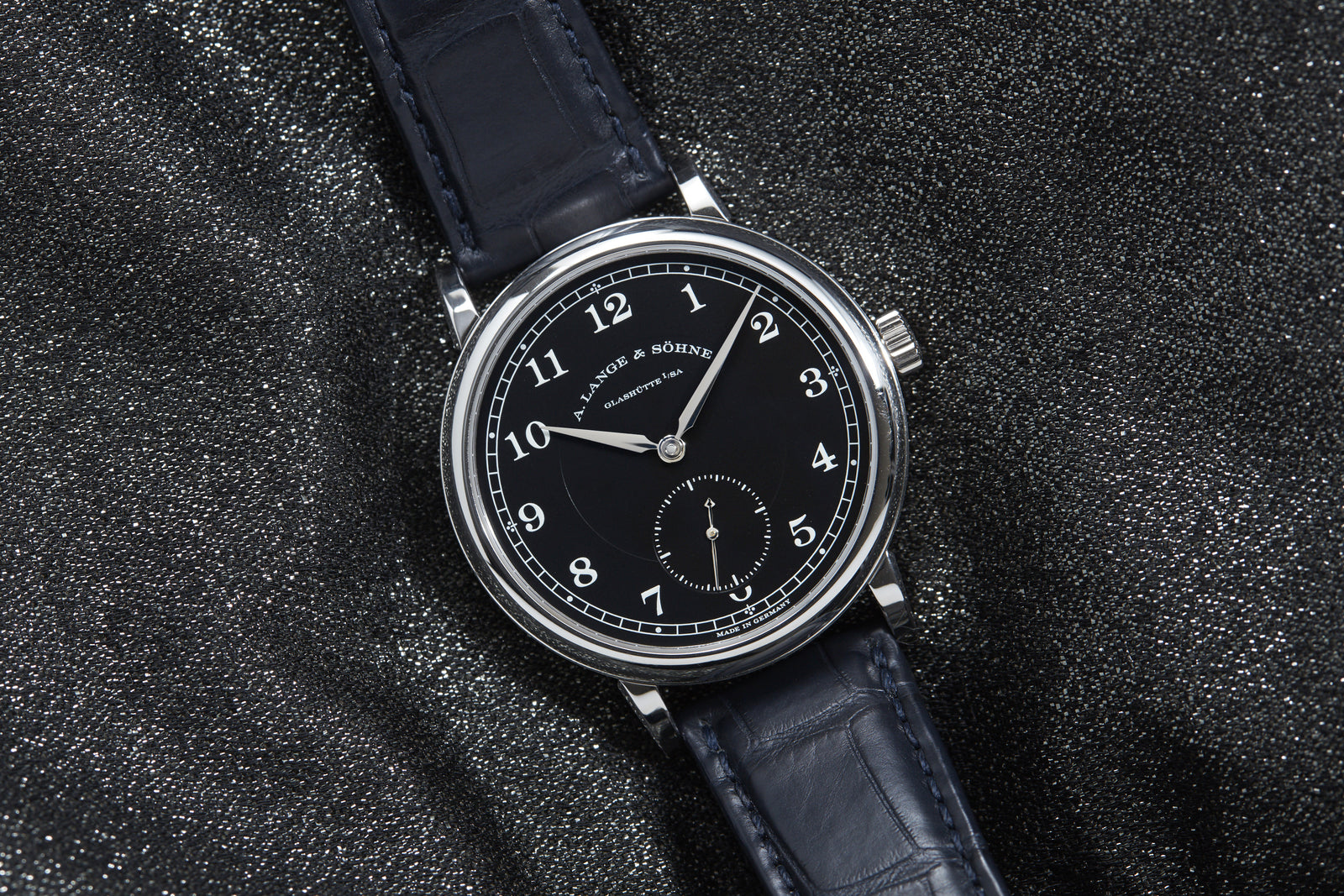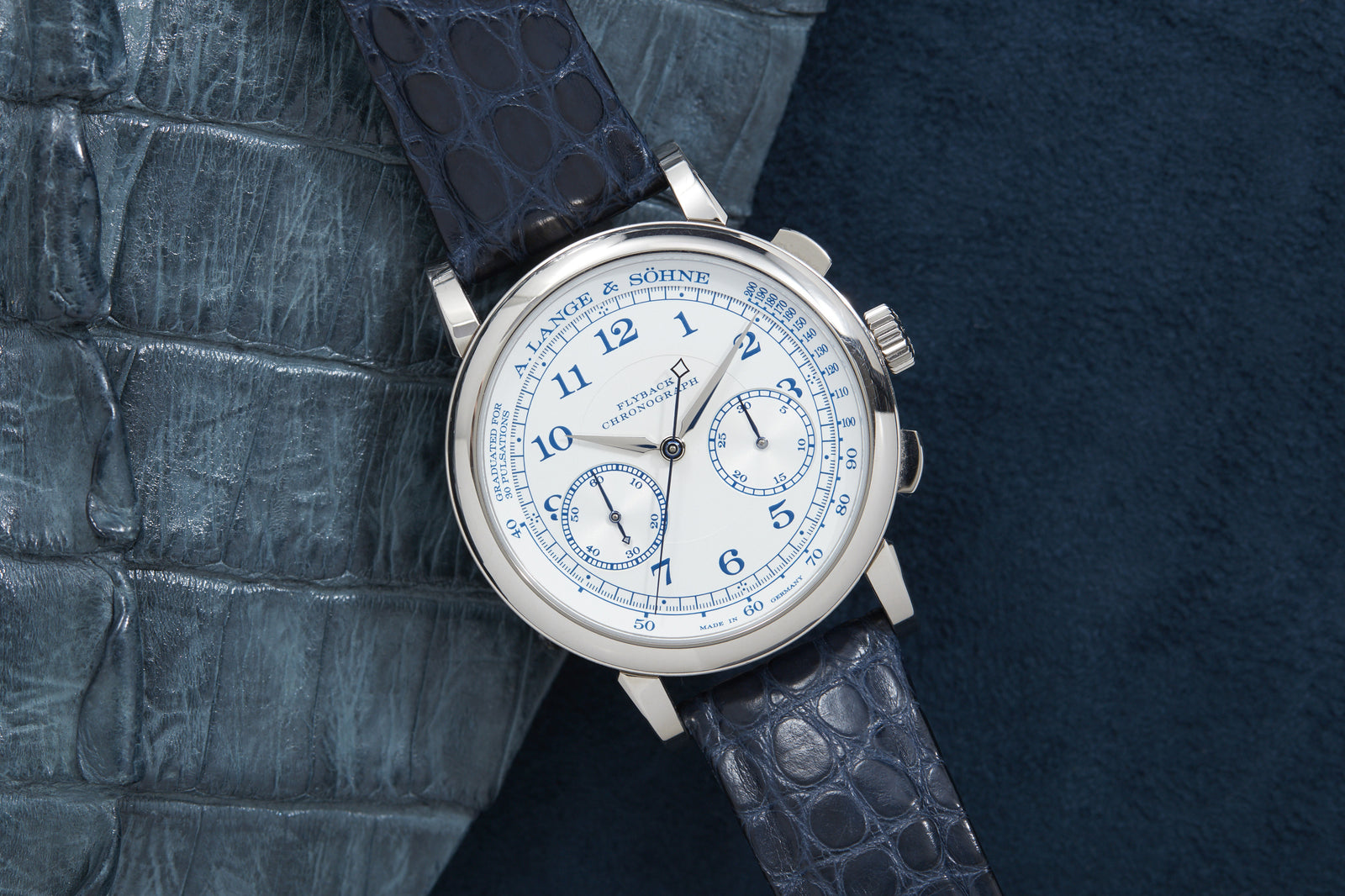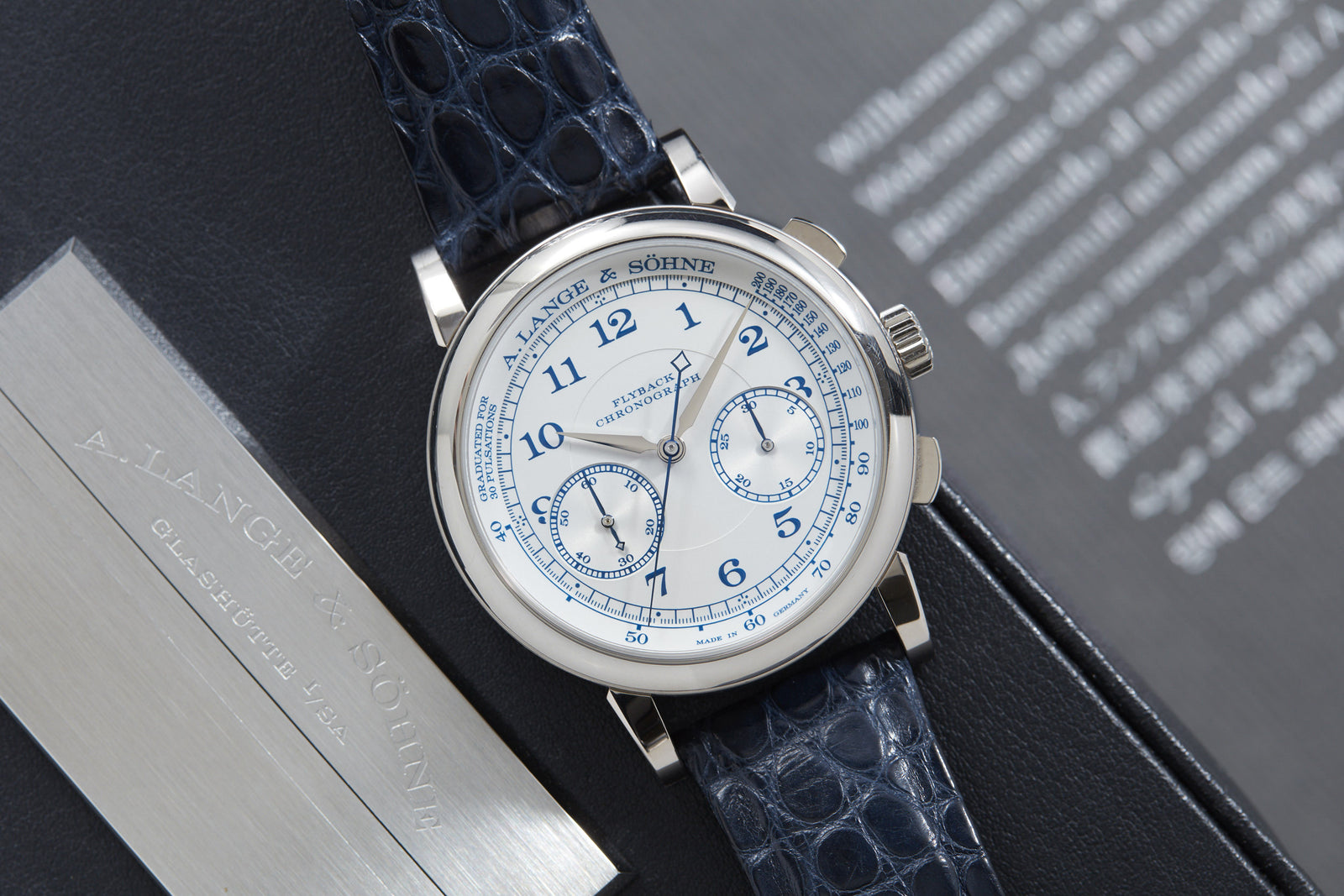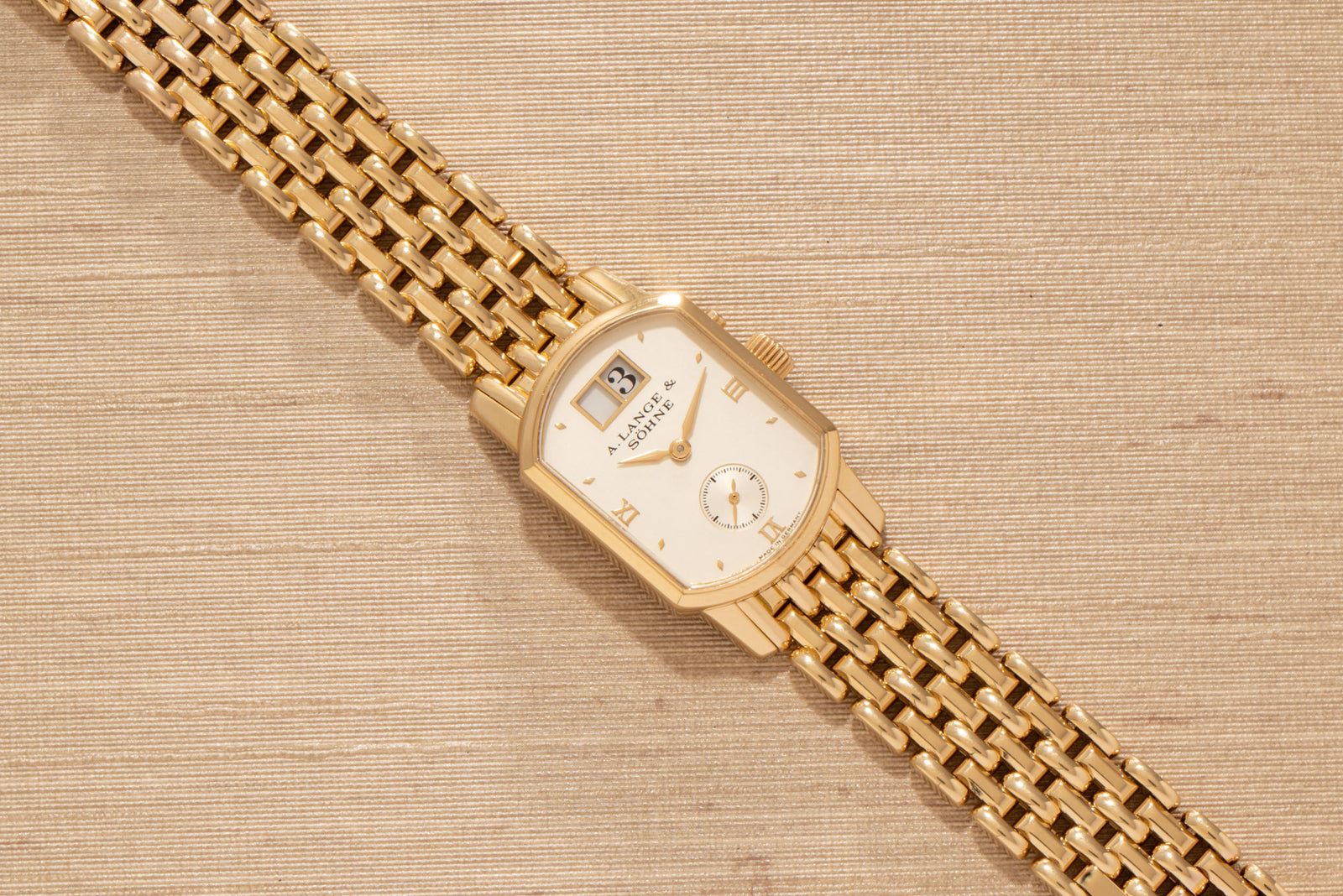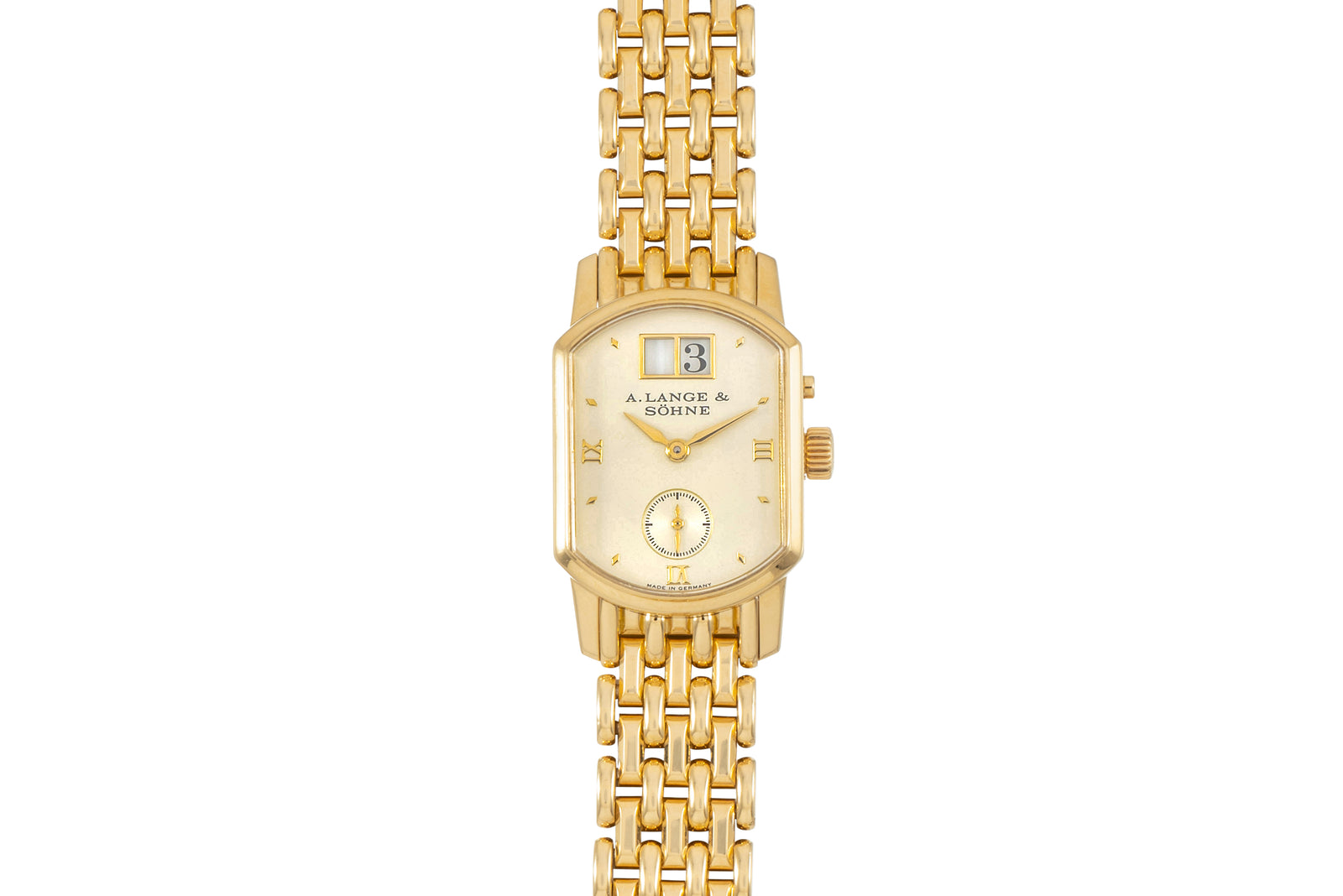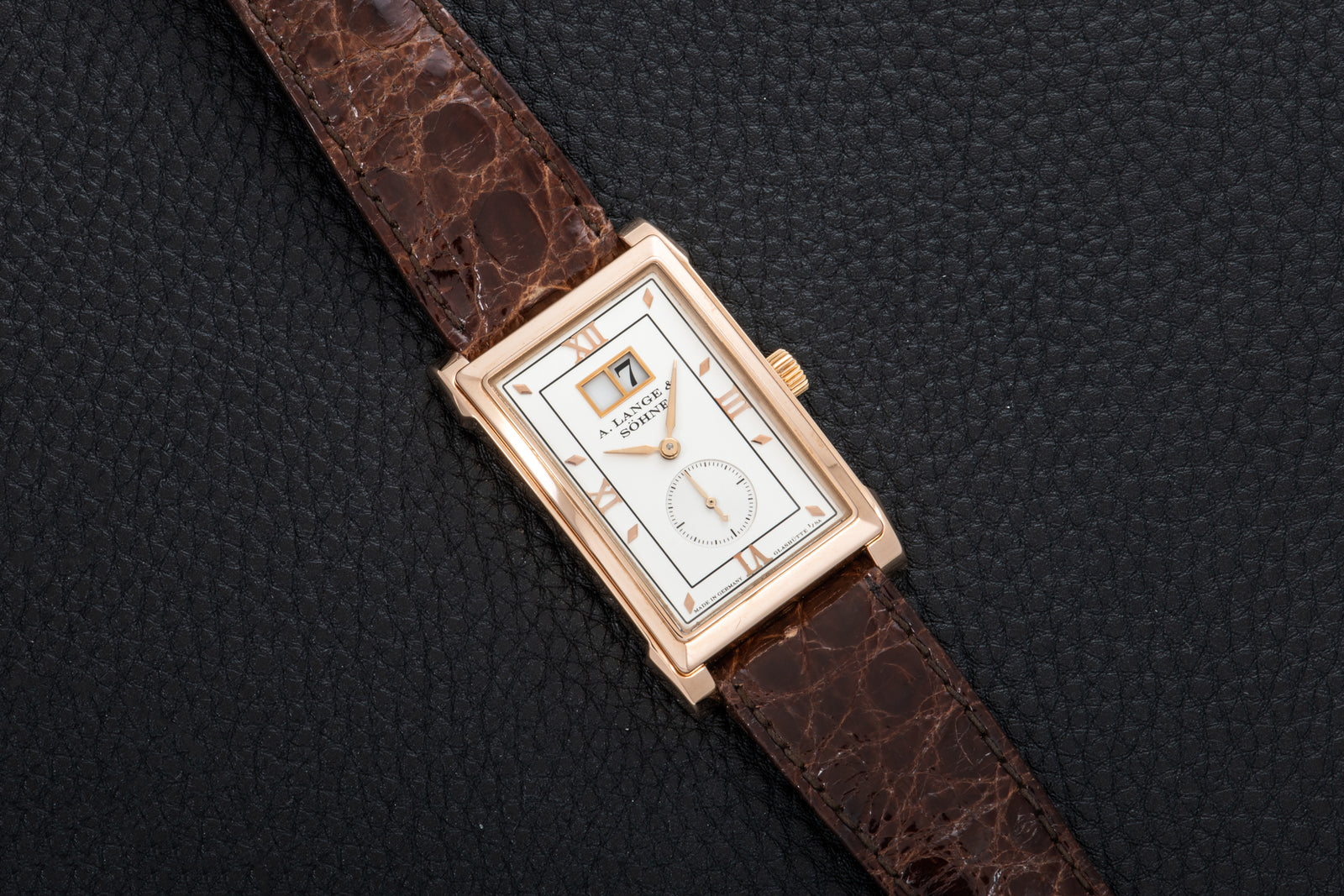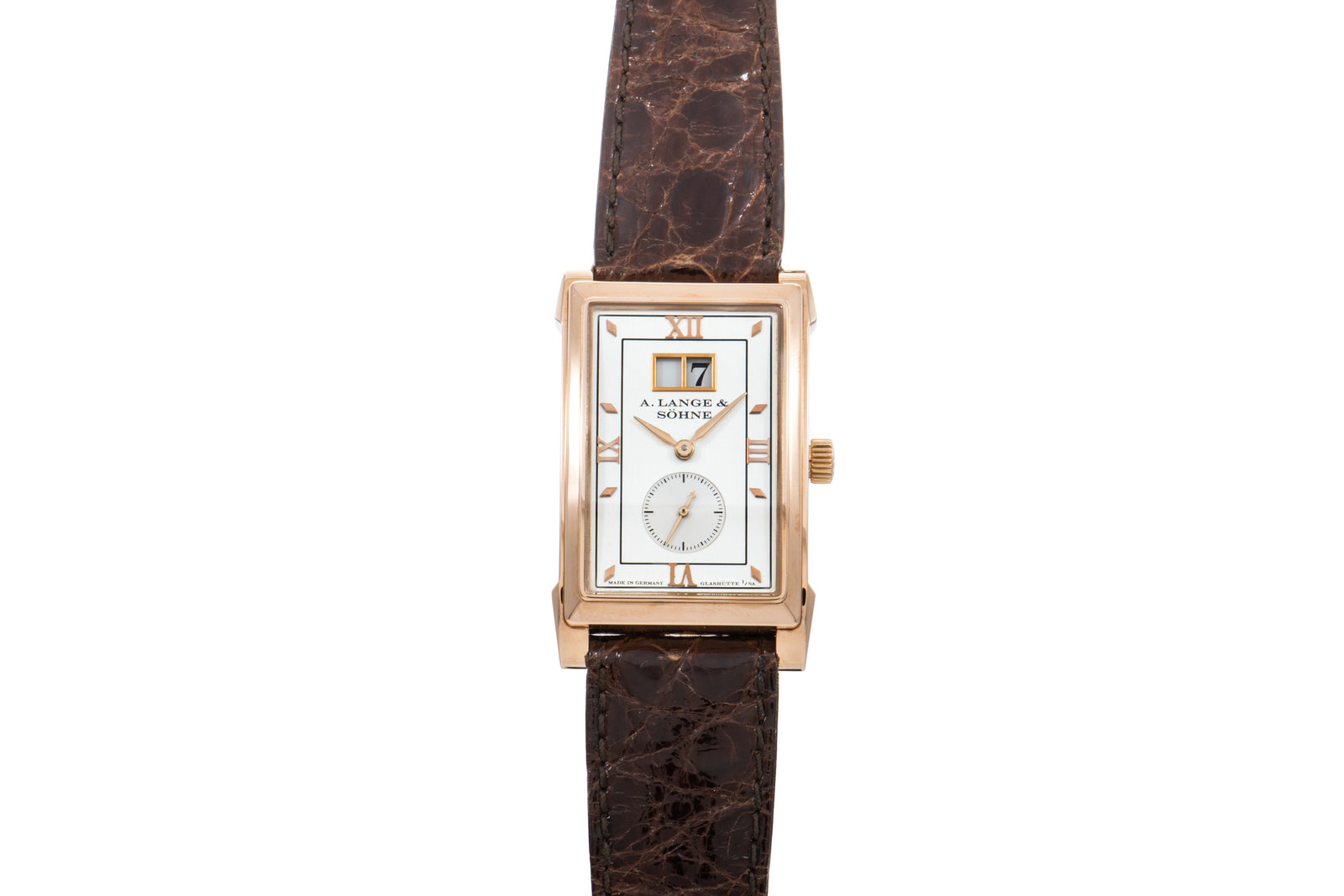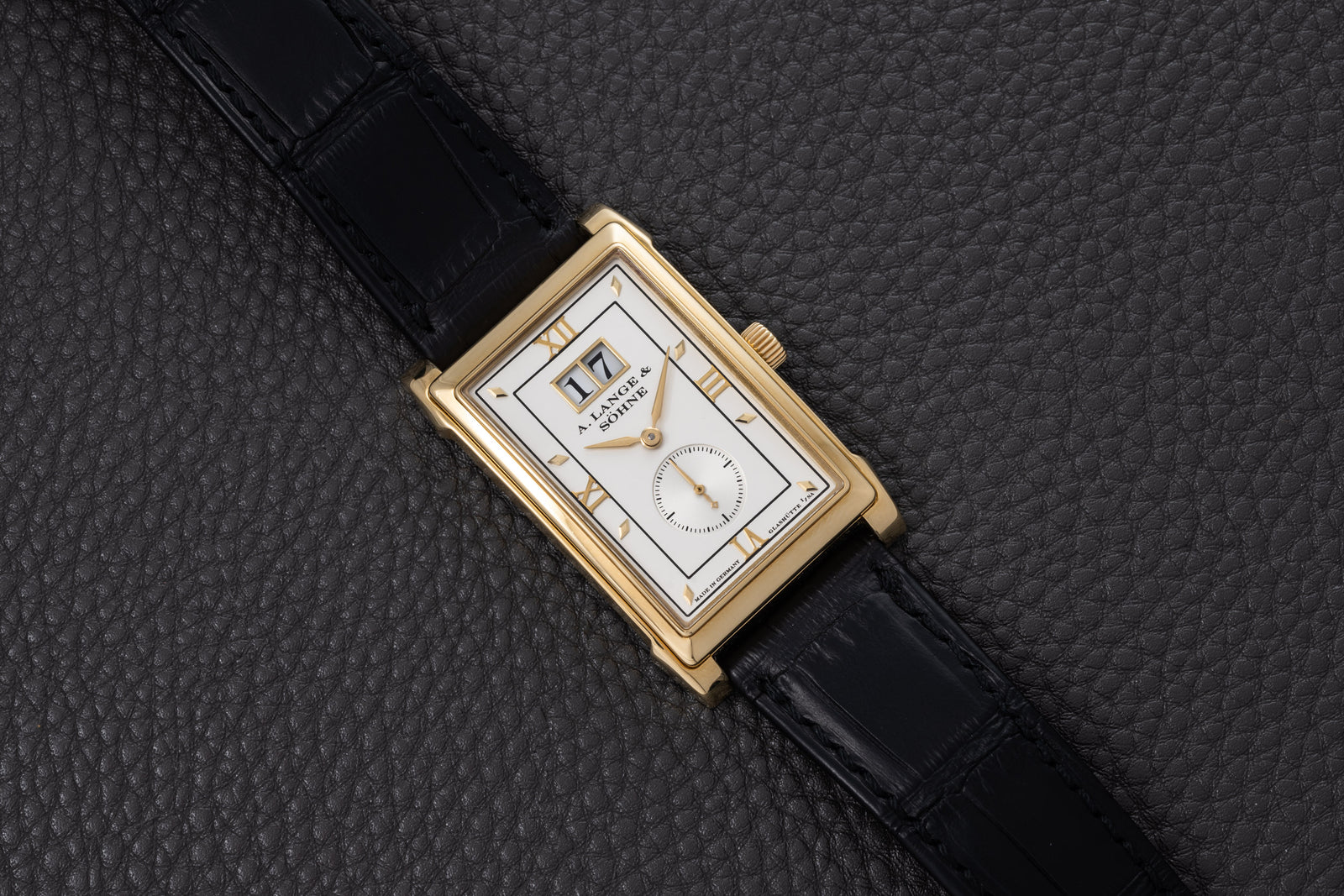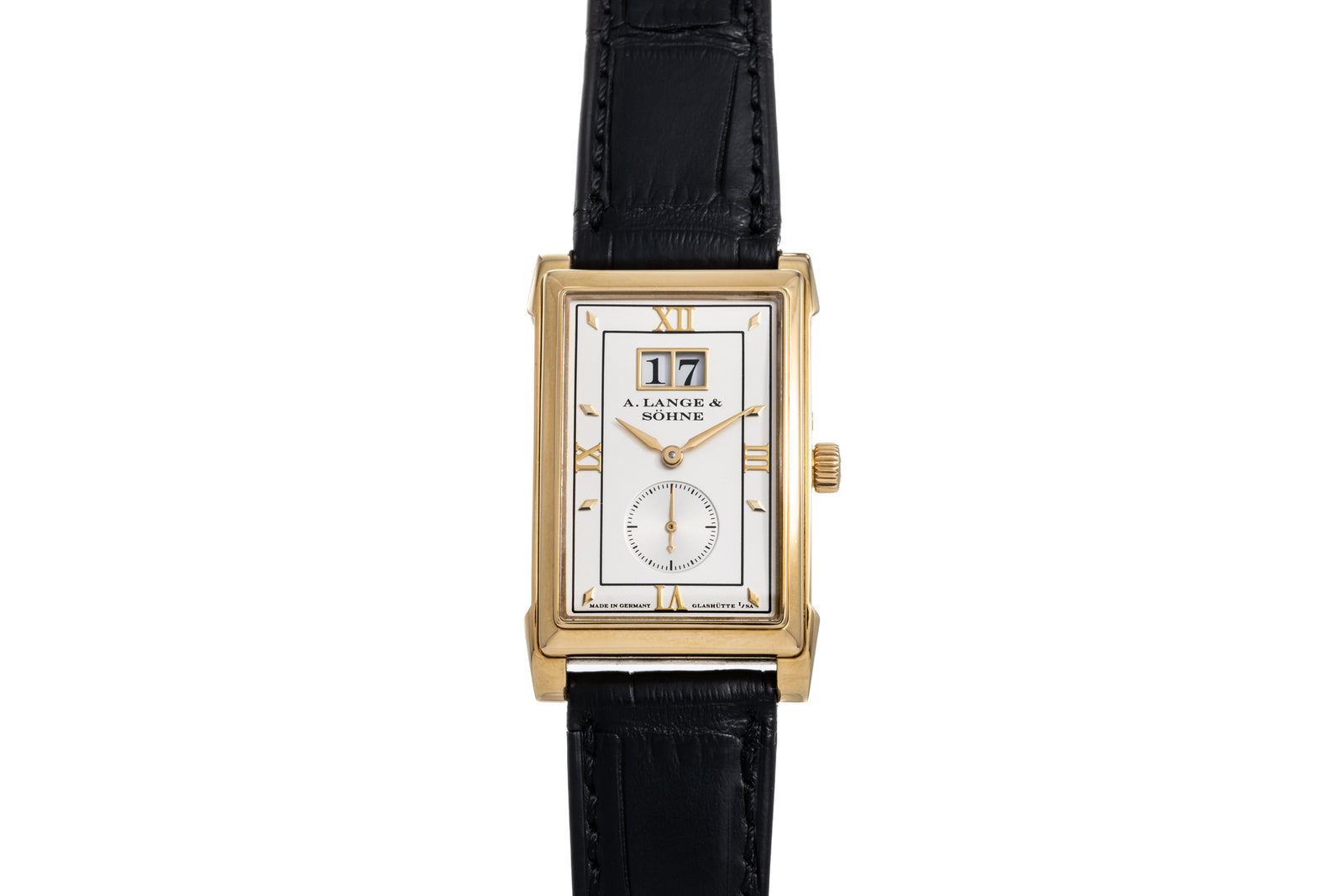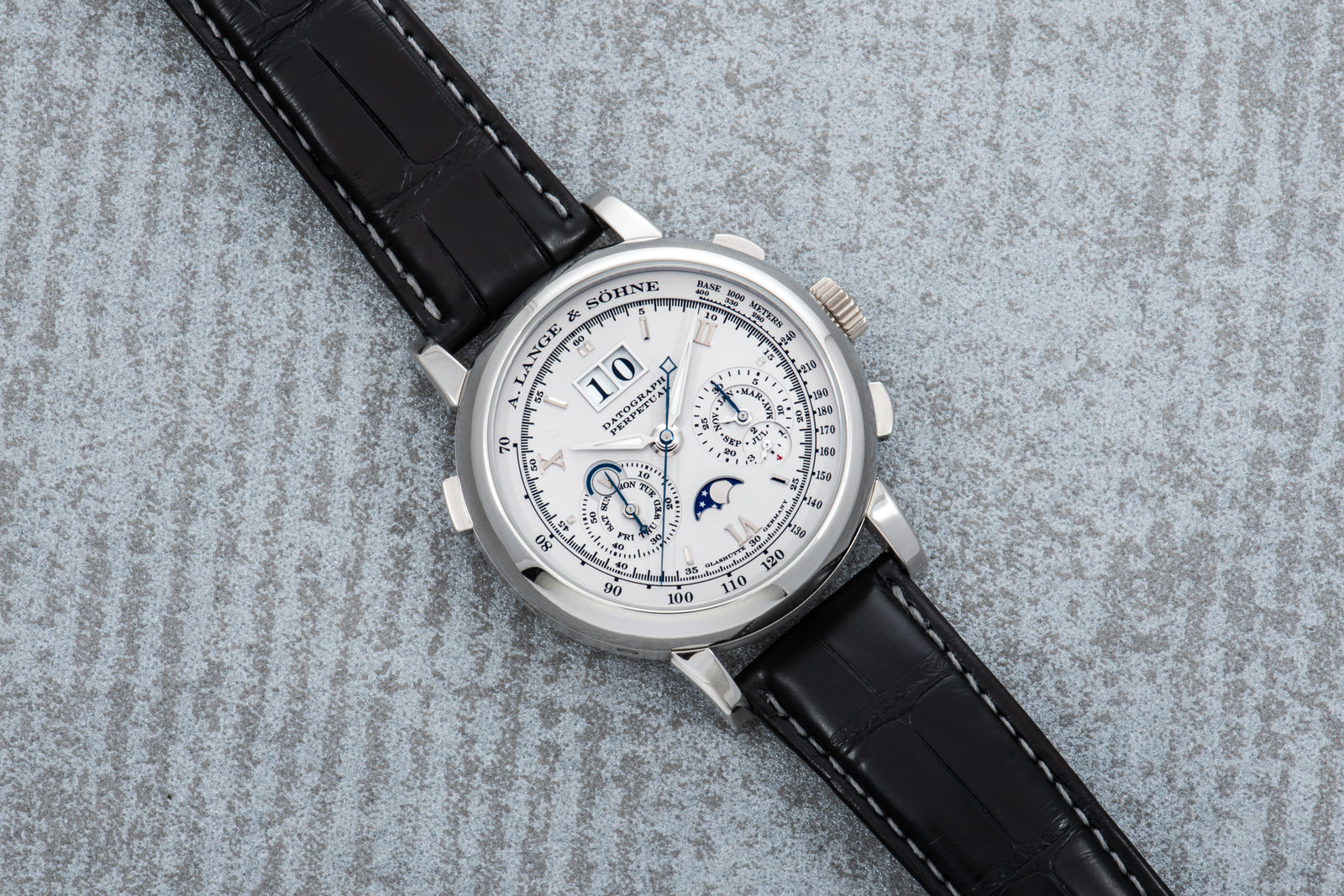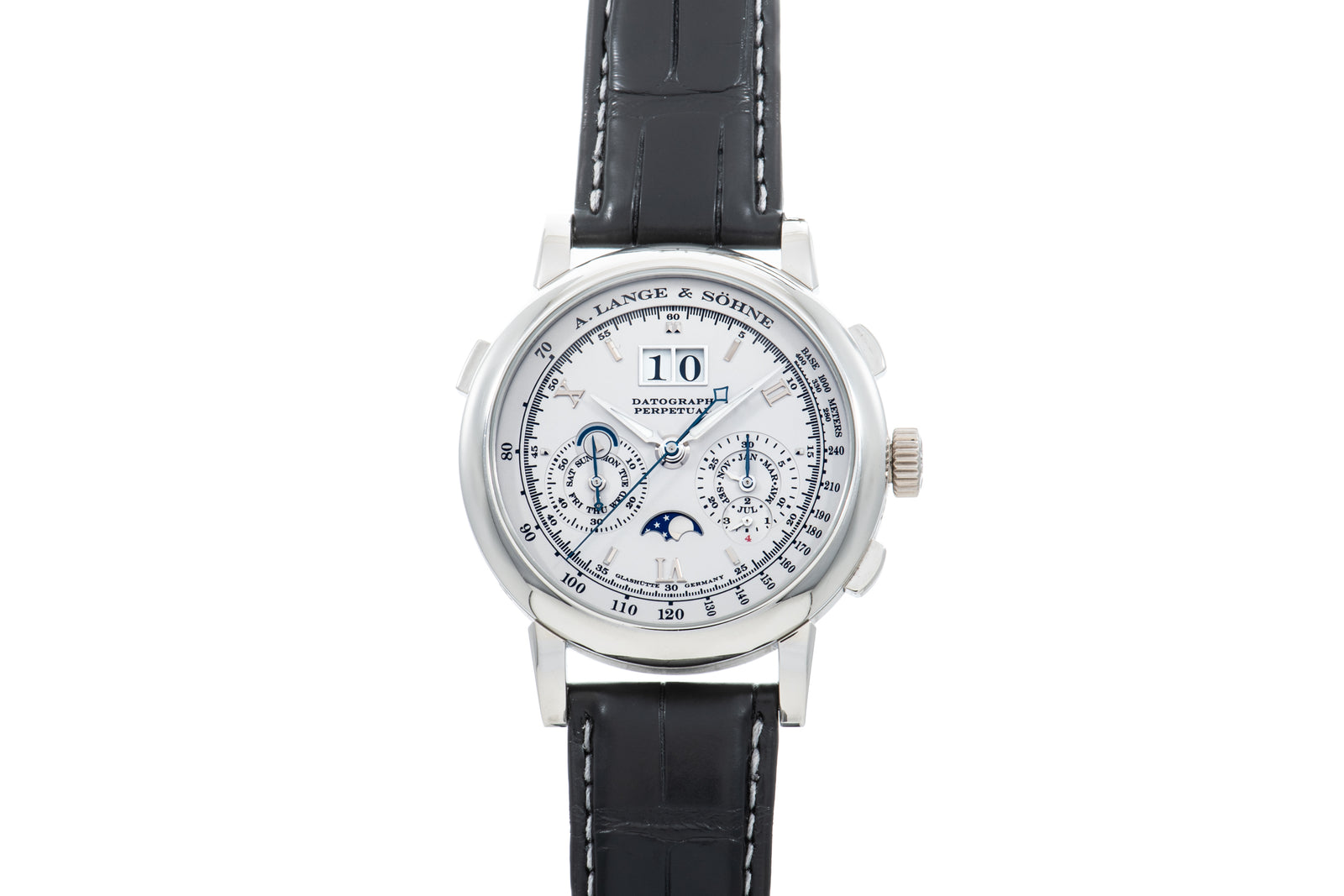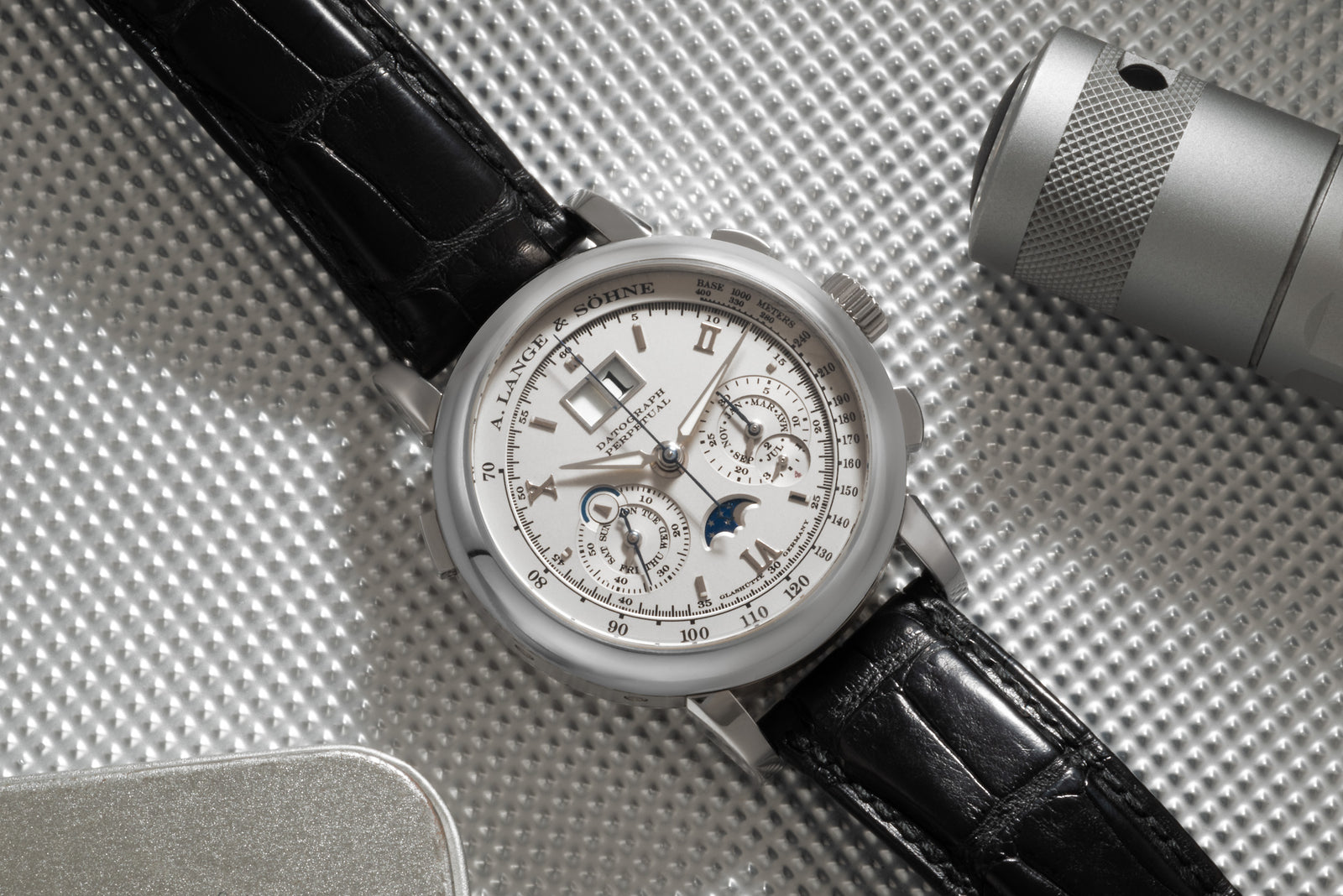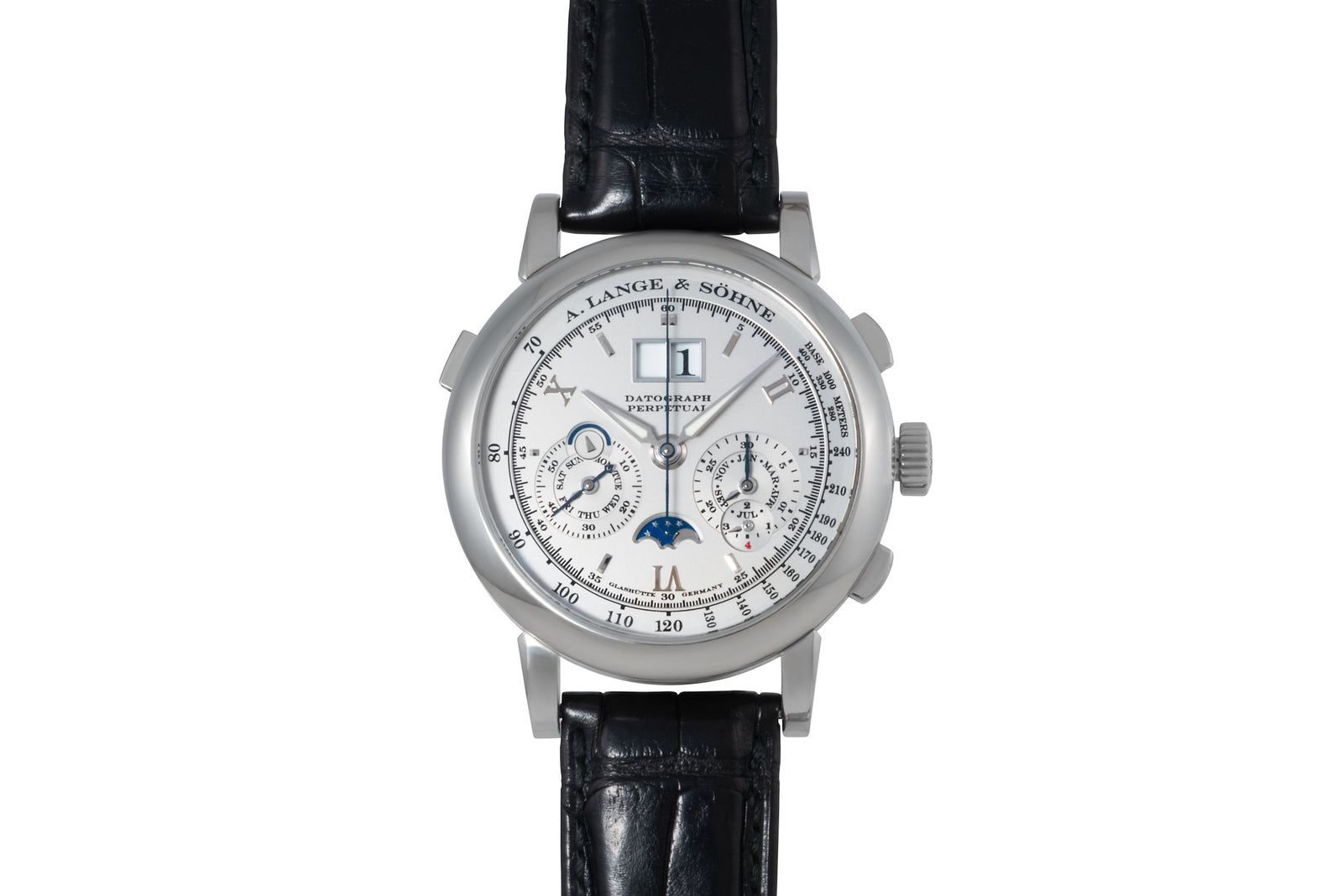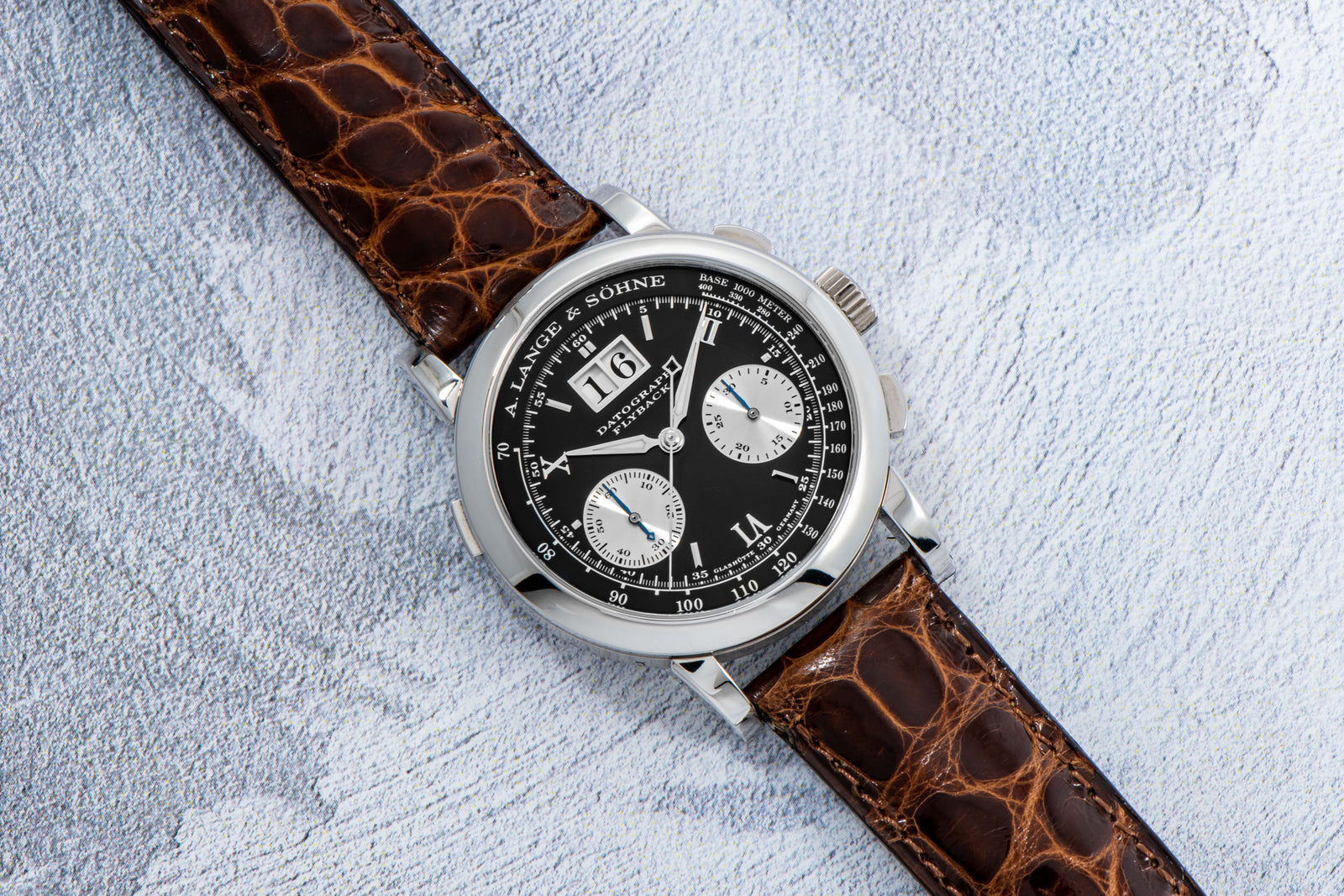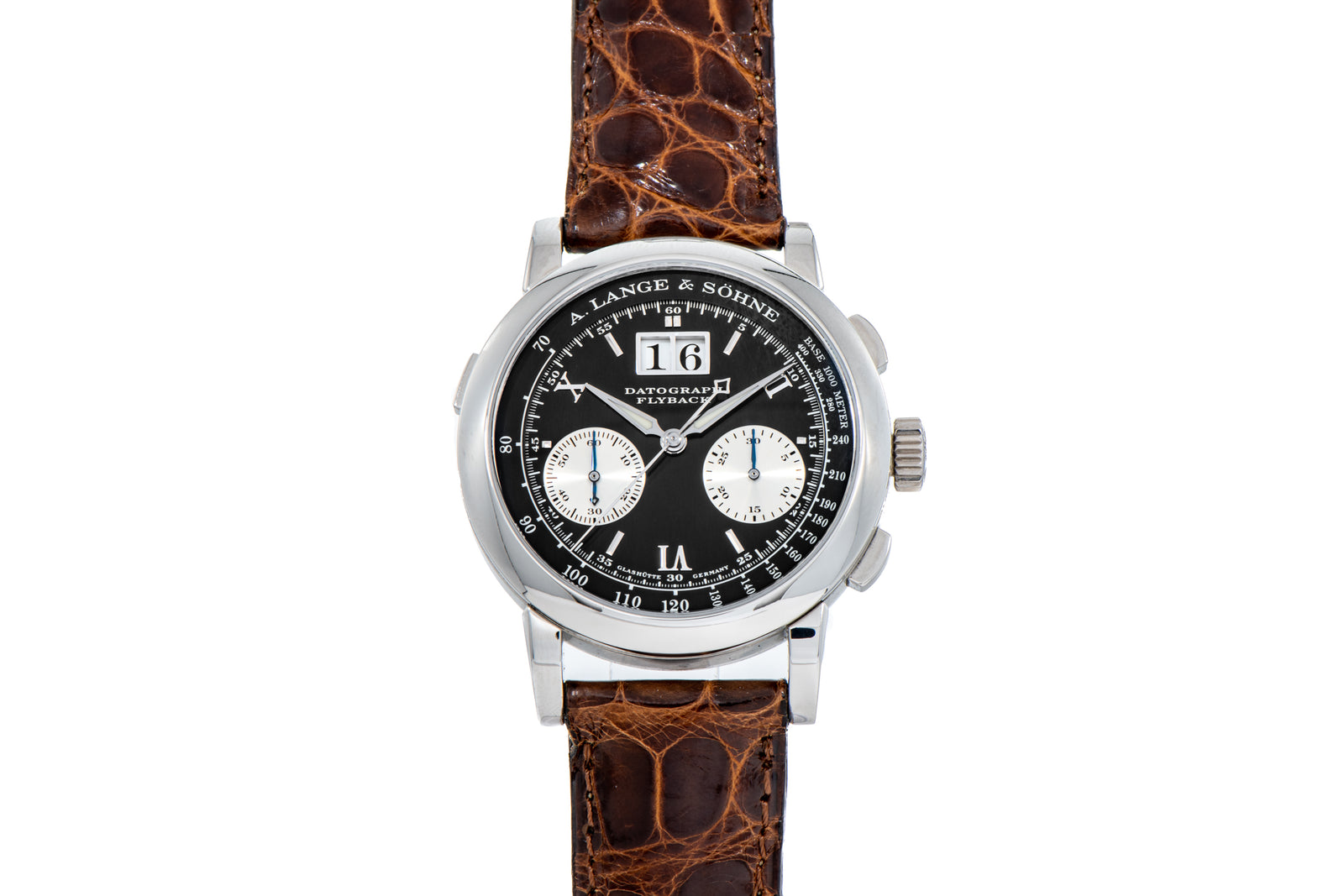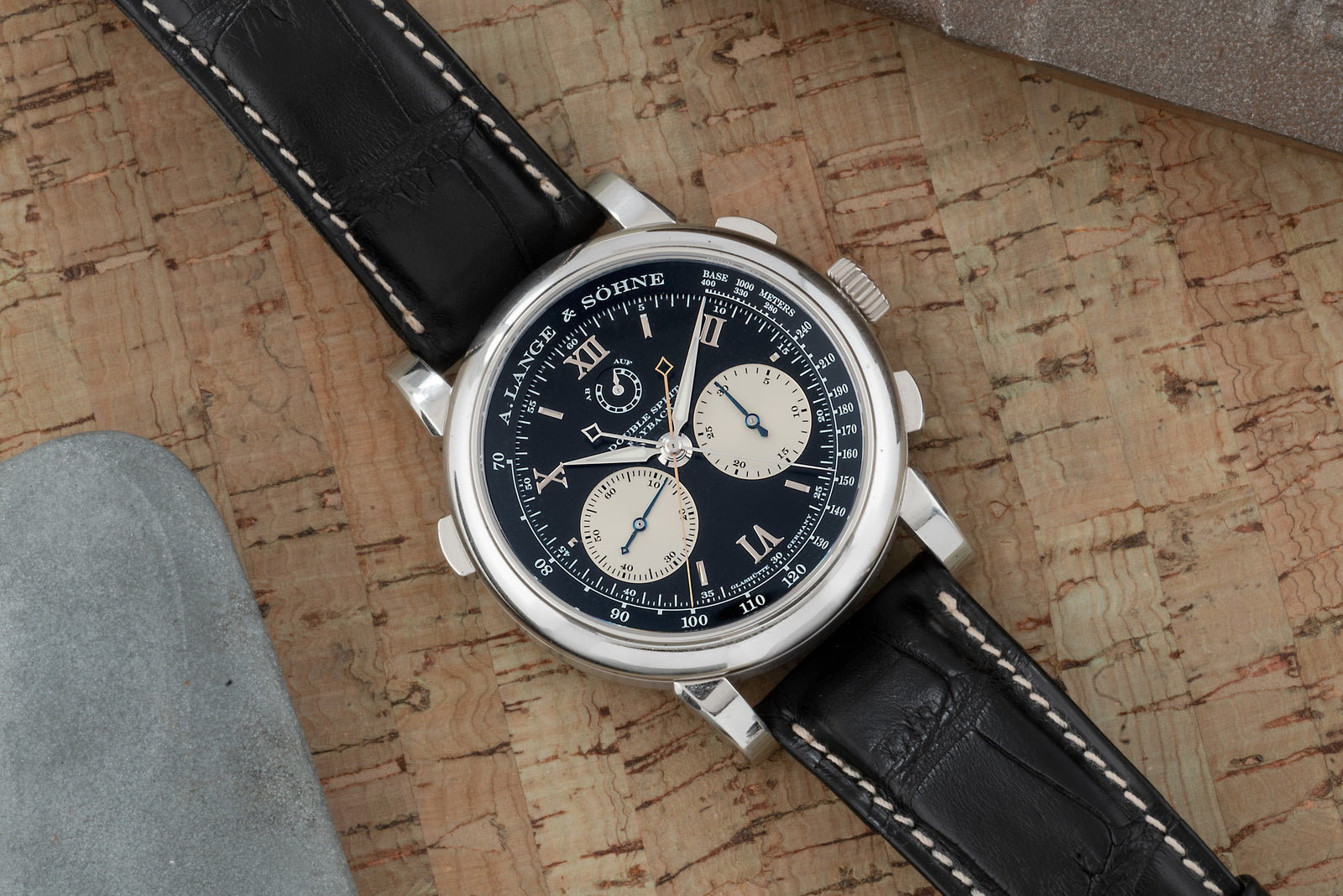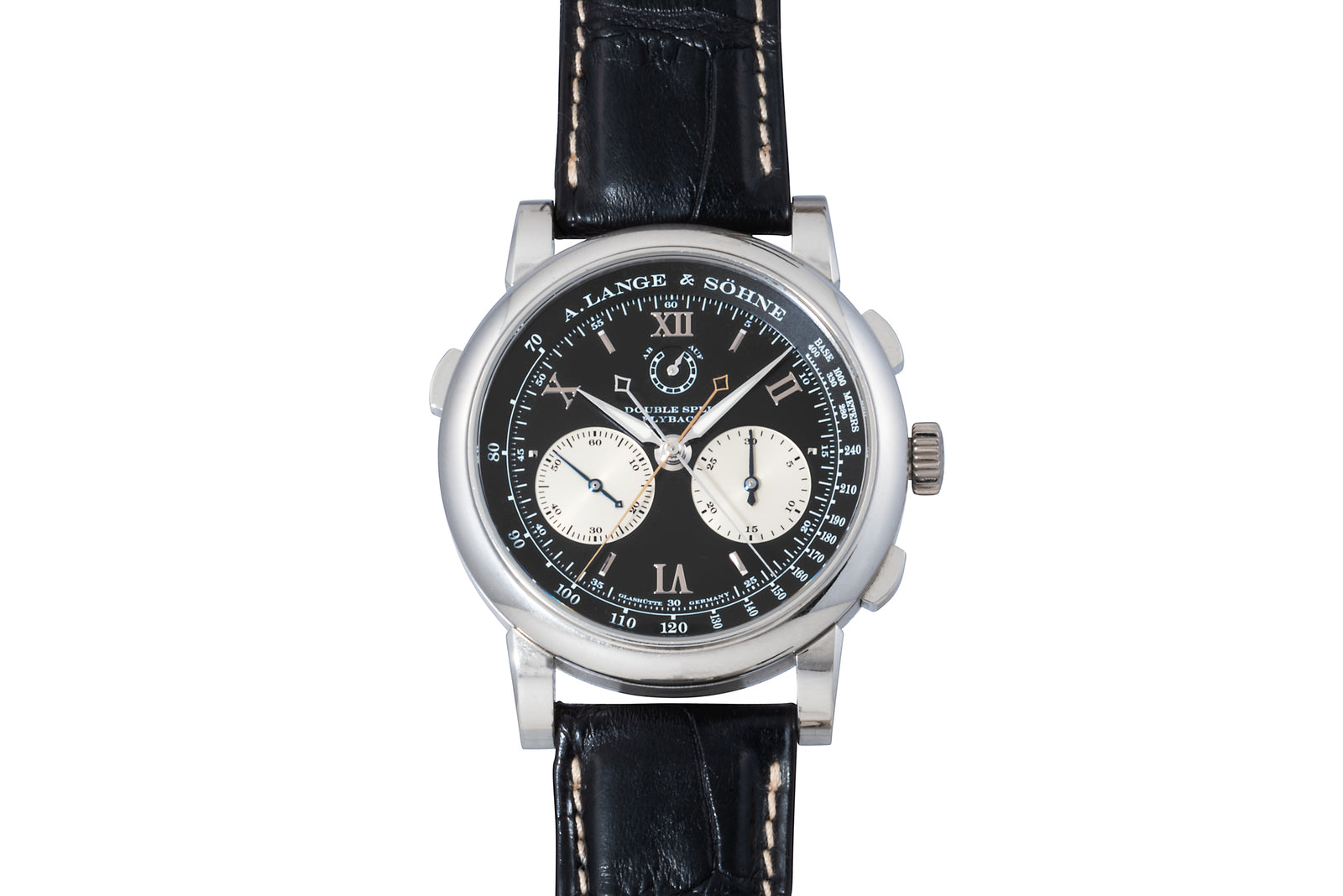Hamilton Fontainebleau
- Soldspan>
- Sold
Why We Love it
–
Why We Love it
–In the 1950s, Hamilton—like many watch manufactures, both American and Swiss—were riding a wave of post-war prosperity. Under the masterful mind of Richard Arbib, the man who put fins on Cadillacs, Hamilton coasted into the 1950s with electric watches like the Ventura and Meteor. Sales were booming, and the Ventura’s cameo appearance on the wrist of Elvis Presley in Blue Hawaii gave the brand renewed exposure.
But when the Swinging Sixties dawned, the tides turned…
Pressure from Swiss manufactures had ramped up continually in the years following the Second World War, when Swiss brands flooded the U.S. market with inexpensive, yet well-made, watches. Hamilton was losing footing on its own turf. To combat flagging sales, Hamilton entered into a partnership with Ricoh, a Japanese company, to create electric watches for the Japanese market.
Unfortunately for Hamilton, who owned 60% of the venture, it was not successful—yet not for a lack of trying on Hamilton’s part. The electronic parts of the watches intended for sale in Japan were manufactured in Hamilton’s factory in Lancaster, PA, and sent to Ricoh’s factory in Japan—where the rest of the watches were made—for assembly and retail. Over 1000 watches were produced a month using that method, but demand wasn’t high enough to meet the supply.
Hamilton and Ricoh dissolved the partnership in 1965, and sold off the remaining stock in the States under the Vantage line. The next year, Hamilton purchased Swiss watch company, Buren—lock, stock, and barrel. Buren’s Intra-Matic micro-rotor movement came with it, and what Hamilton—in concert with Heuer, Breitling, and Dubois-Depraz—built on this movement would be the last glimmer of hope for Hamilton.
We mean, of course, the Chrono-Matic automatic chronograph calibre, referred to by Heuer and Breitling as the Calibre 11.
It was the subject of Project 99, in which the former competitors joined forces to create a self-winding chronograph movement. The idea had first come to Charles-Edouard Heuer—president of Heuer & Co. and father of Jack—in the late 1950s. Buren’s Intra-Matic, which was the thinnest automatic movement available at the time, had opened him to an even greater possibility: making it into a chronograph.
He first turned to Hamilton, now owner of the Intra-Matic. For the chronograph module, Heuer turned to Dubois-Depraz, who had constructed an ultra-thin chronograph module for Heuer’s Monte Carlo stopwatch. Finally, for capital he turned to his friend Willy Breitling.
With the major players in place, Project 99 continued apace, with each person involved in its construction sworn to the utmost of Swiss-like secrecy. By the autumn of 1968, 100 prototypes of the Chrono-Matic were available. Of these, Hamilton received ten.
And in the following March, the group held a press conference at the PanAm Building in New York and unveiled the movement to the world. The next month, at the Basel Fair, each brand showed dozens of models utilizing the movement. This watch, the Fontainebleau, was one of them.
Named after the chateau in France, the Fontainebleau utilized a distinctive waterproof case whose shape is reminiscent of the Heuer Monaco, released the same year. But while Heuer used bright, flashy colors for the Monaco, the Fontainebleau is a study in minimalism, in subdued silver, black, and white. The quirky shape of the case is echoed in the chapter ring and the chronograph registers.
With an appearance as revolutionary as the movement inside it, the Fontainebleau has never enjoyed as much of a collector following as its Chrono-Matic stablemates; however, we hope that will change.
The Chrono-Matic was meant to be Hamilton’s saving grace, the Hail Mary that would save the once-mighty American manufacture from ruin.
It wasn’t.
But the watches that Hamilton built around that ground-breaking movement live on, enduring testaments to the manufacture’s knack for innovative design.
A:S Guarantee
+
A:S Guarantee
+Our Pledge
Analog:Shift stands behind the authenticity of our products in perpetuity.
Condition
Since our pieces are vintage or pre-owned, please expect wear & patina from usage and age. Please read each item description and examine all product images.
Warranty
We back each Analog:Shift vintage timepiece with a two-year mechanical warranty from the date of purchase.
International Buyers
Please contact us prior to purchase for additional details on shipping and payment options.
Shipping & Returns
+
Shipping & Returns
+All of our watches include complementary insured shipping within the 50 states.
Most of our products are on hand and will ship directly from our headquarters in New York City. In some cases, watches will be shipped directly from one of our authorized partners.
We generally ship our products via FedEx, fully insured, within 5 business days of purchase. An adult signature is required for receipt of all packages for insurance purposes. Expedited shipping is available at an additional cost. We are also happy to hand deliver your purchase in Manhattan or you may pick it up at our showroom.
Returns must be sent overnight or by priority international delivery, fully insured and paid for by the customer. A restocking fee may apply. Watches must be returned in the same condition as initially shipped.
We welcome international buyers, please contact us prior to purchase for additional details on shipping and payment options.
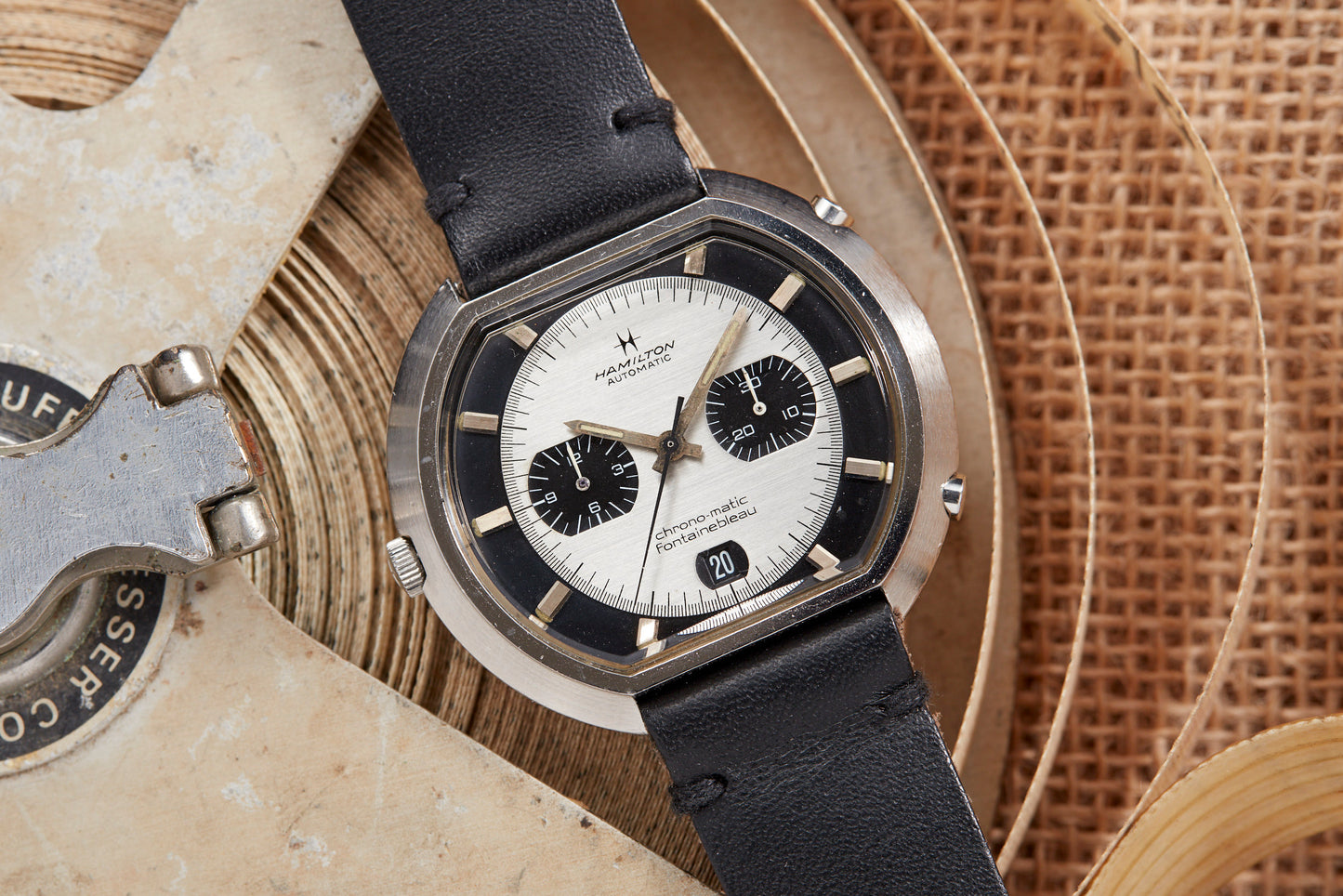
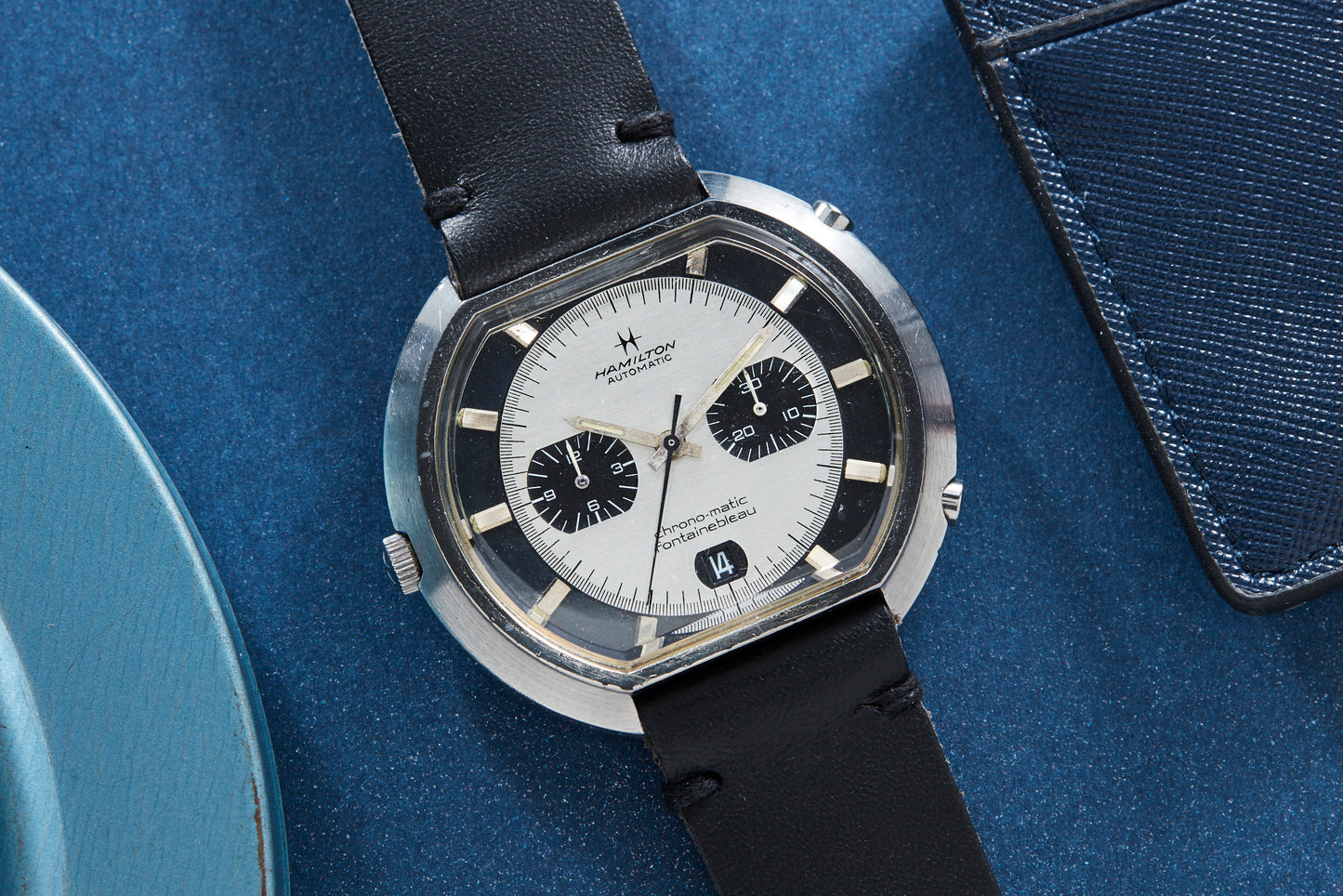
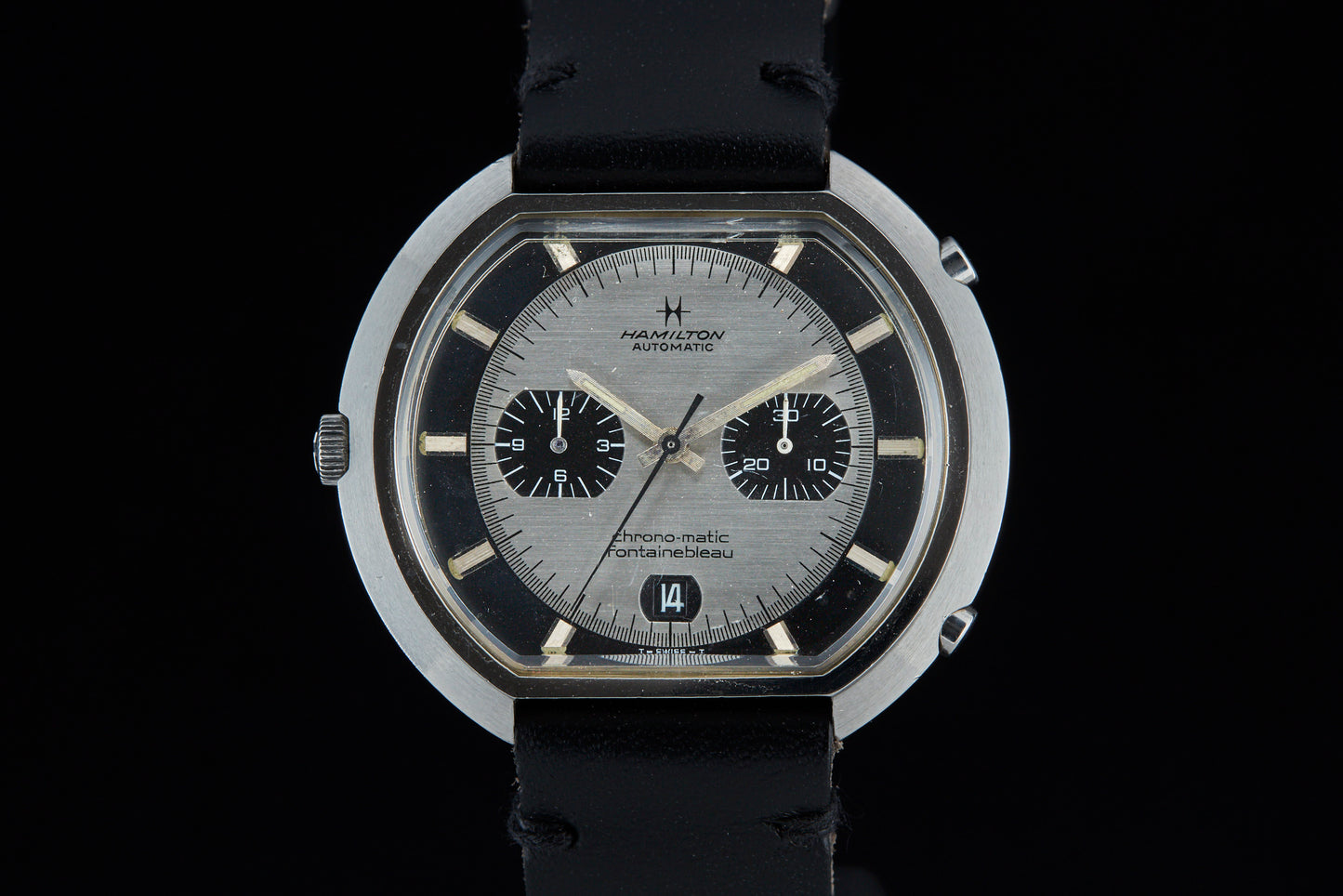
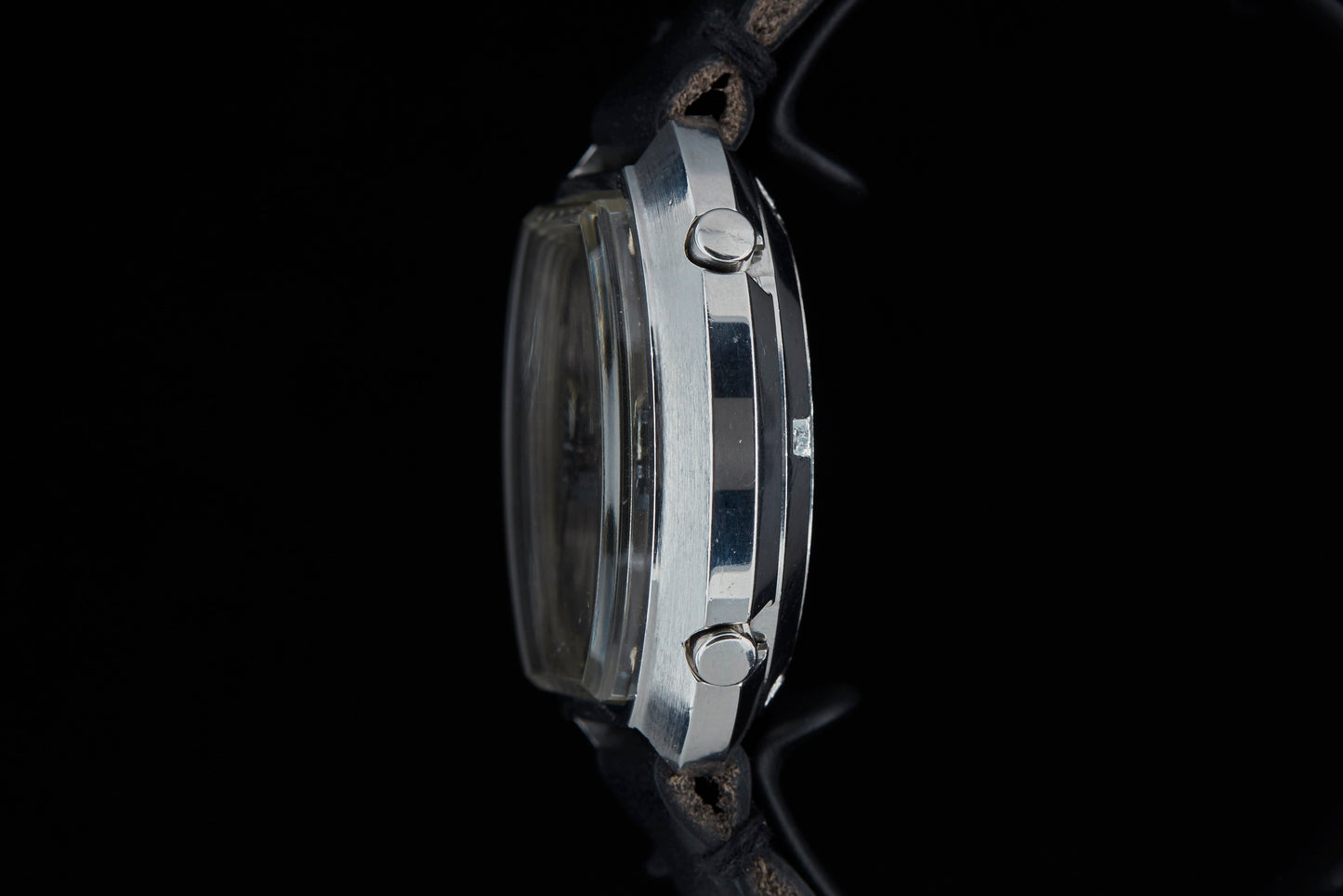
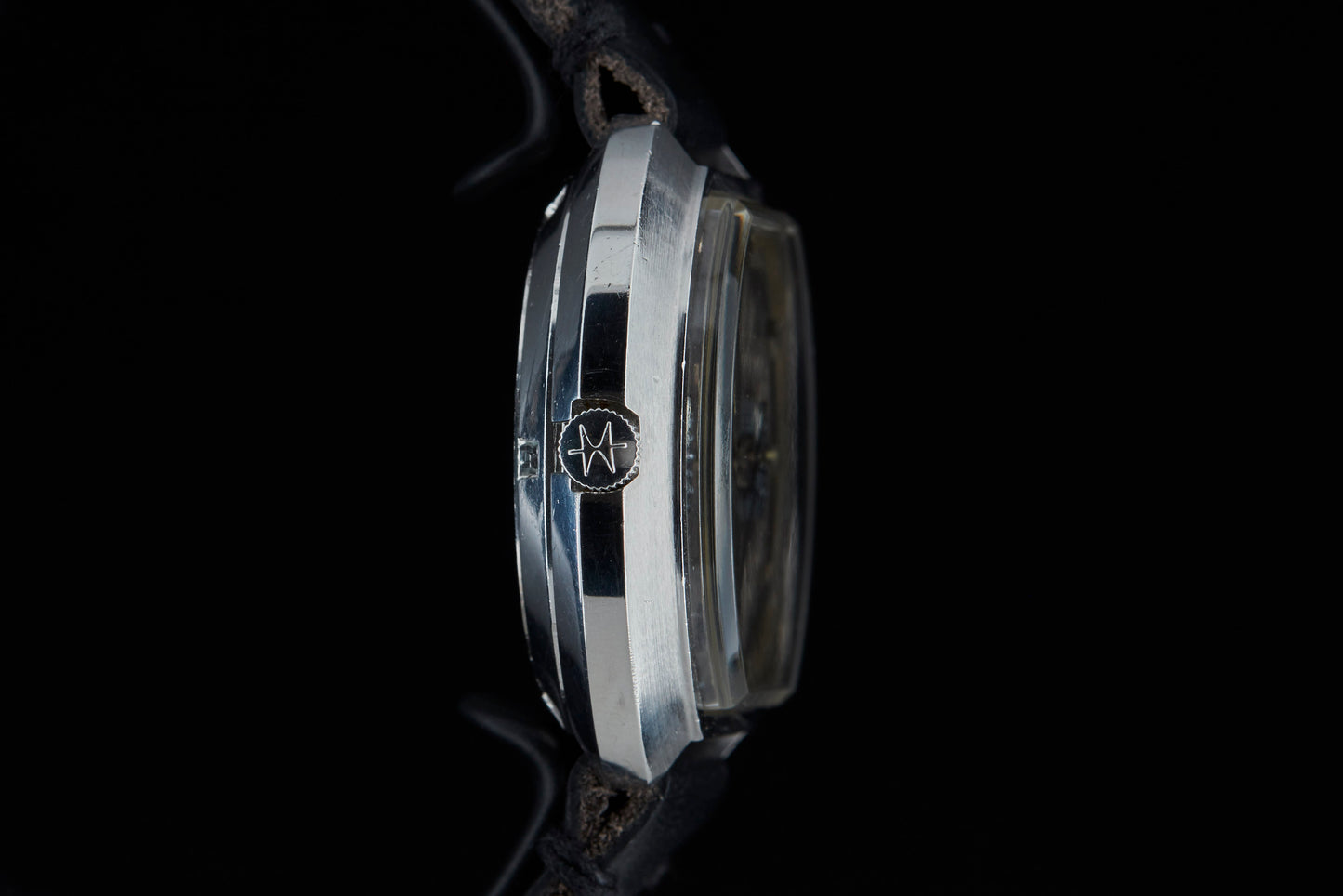
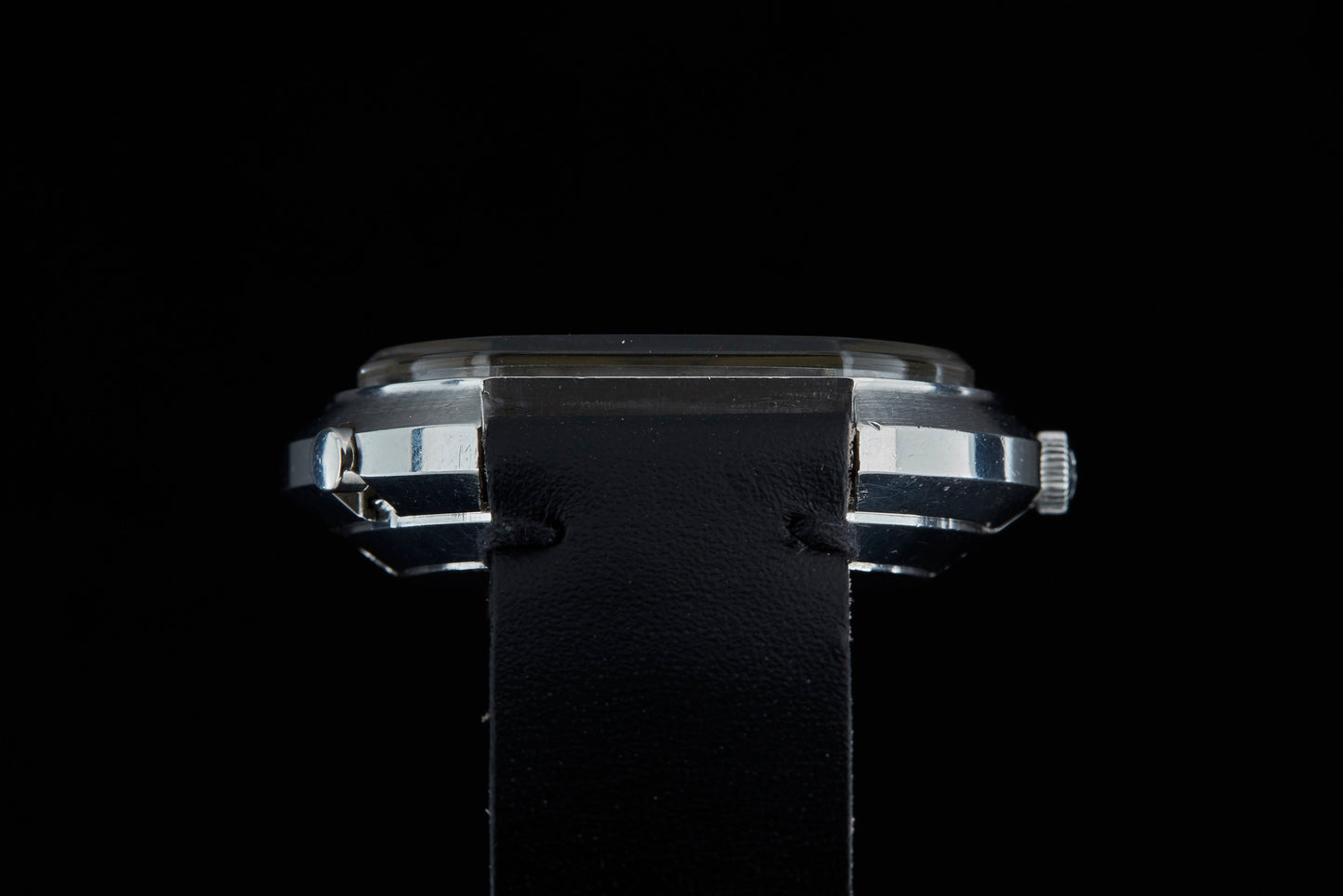
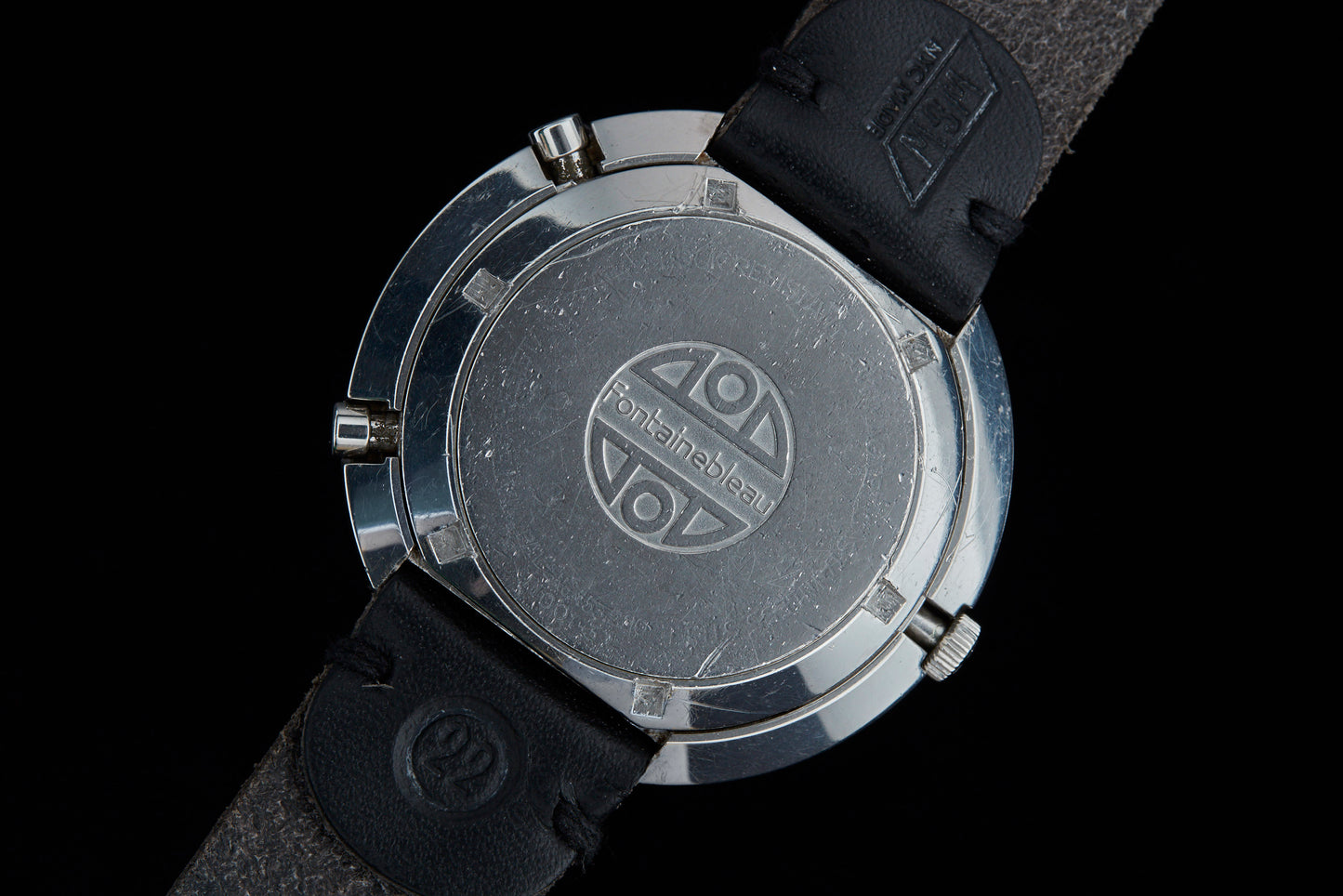
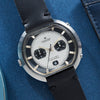
Hamilton Fontainebleau
- Soldspan>
- Sold
